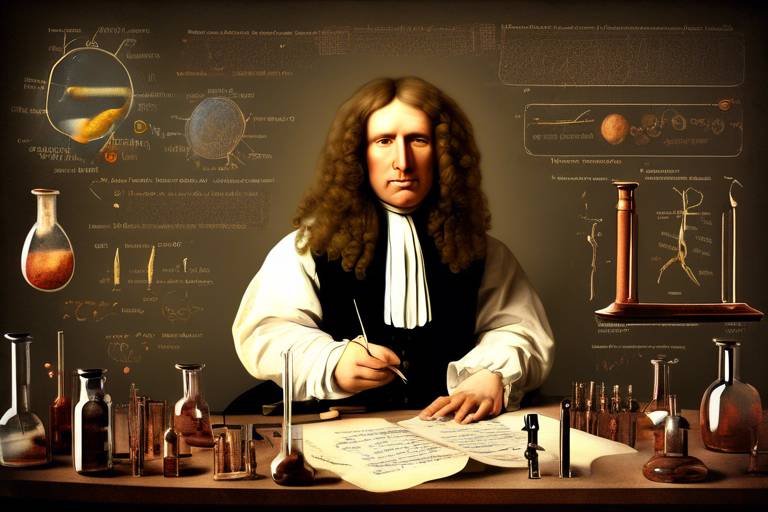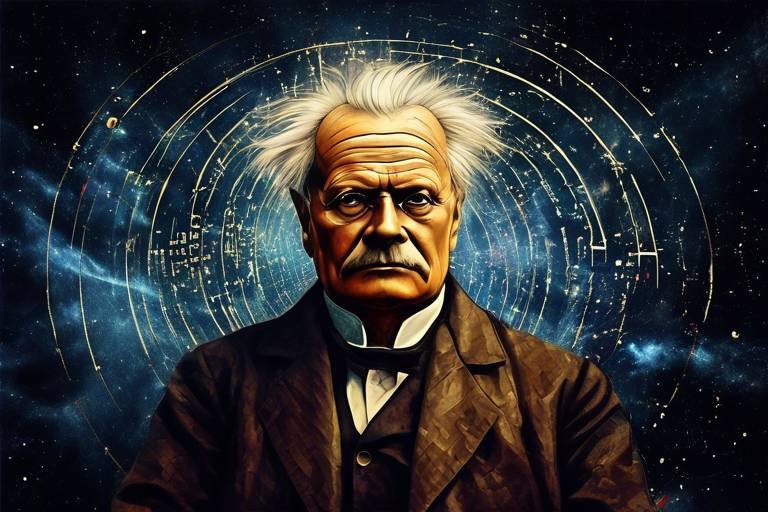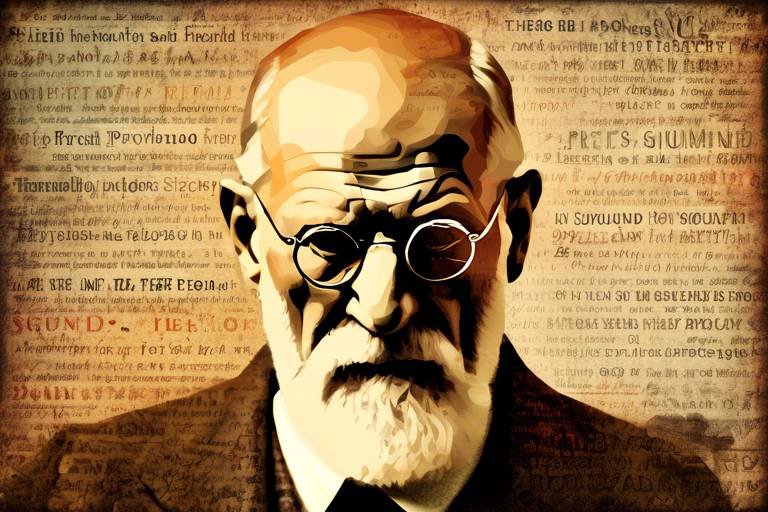The Contributions of Rachel Carson to Environmental Science
Rachel Carson was not just a writer; she was a visionary who saw the world through a lens of interconnectedness. Her contributions to environmental science are monumental, serving as a beacon for those who seek to understand and protect our fragile ecosystems. In a time when the environment was often overlooked, Carson's work illuminated the dangers of human actions on nature, awakening a global consciousness that continues to thrive today.
Born in 1907, Carson's early experiences in rural Pennsylvania nurtured her love for nature. She spent countless hours exploring the woods, rivers, and fields, developing a profound appreciation for the natural world. This passion was further cultivated during her studies at Chatham University and later at Johns Hopkins University, where she earned a master's degree in zoology. Her education not only grounded her in scientific principles but also honed her exceptional writing skills, allowing her to communicate complex ideas with clarity and emotion.
Carson's most significant contribution came through her groundbreaking publications, particularly Silent Spring, which challenged the status quo regarding pesticide use. At a time when chemical companies dominated agricultural practices, Carson's work boldly questioned the safety and ethics of these substances. She meticulously documented the detrimental effects of pesticides on wildlife and human health, weaving scientific evidence with poignant storytelling. This combination made her message resonate deeply, prompting readers to reassess their relationship with the environment.
The release of Silent Spring in 1962 was nothing short of explosive. It ignited fierce debates among scientists, policymakers, and the public. Many industry leaders dismissed her findings, claiming she was an alarmist. However, Carson's steadfast commitment to truth and her ability to articulate her concerns with empathy and clarity fueled a national discourse on environmental protection. This backlash only solidified her resolve, as she continued to advocate for ecological integrity despite the challenges she faced.
Carson's legacy is not confined to her writings alone. The impact of Silent Spring was profound, leading to the establishment of regulatory bodies such as the Environmental Protection Agency (EPA) in the United States. Her work inspired legislation aimed at protecting ecosystems and public health, paving the way for future environmental policies. Today, her influence is evident in ongoing discussions about sustainability, conservation, and the urgent need to address climate change.
Beyond her literary contributions, Rachel Carson was a passionate advocate for conservation. She understood that the health of our planet is intricately linked to the well-being of all living beings. Her advocacy efforts emphasized the importance of preserving natural habitats and the interconnectedness of life. Carson collaborated with numerous environmental organizations, lending her voice and expertise to shape their missions and strategies. Her ability to communicate complex scientific concepts made her a valuable asset in these advocacy efforts, inspiring a new generation of environmentalists.
As we reflect on Rachel Carson's contributions, it becomes clear that her legacy continues to inspire countless individuals. From scientists to everyday citizens, her commitment to ecological awareness has fostered a culture of activism. People are now more informed and engaged in addressing contemporary environmental challenges, driven by the principles Carson championed. Her work serves as a reminder that each of us has a role to play in protecting our planet for future generations.
- What was Rachel Carson's most famous book?
Her most famous work is Silent Spring, published in 1962, which raised awareness about the dangers of pesticides.
- How did Rachel Carson influence environmental policy?
Carson's advocacy and writings led to the establishment of the EPA and influenced significant environmental legislation.
- What is Rachel Carson's legacy today?
Her legacy lives on through ongoing environmental activism and discussions about sustainability and ecological integrity.

Early Life and Education
Rachel Carson was born on May 27, 1907, in Springdale, Pennsylvania. From a young age, she exhibited a profound love for nature, often exploring the woods and rivers near her home. This early connection with the natural world ignited her passion for science and set the stage for her future contributions to environmentalism. Carson's family, particularly her mother, encouraged her curiosity, fostering an environment where questions about the world around her were welcomed and celebrated.
Carson's educational journey began at Chatham University, where she initially pursued a degree in English. However, her fascination with marine biology led her to transfer to Johns Hopkins University, where she earned a master's degree in zoology. This academic shift not only honed her scientific skills but also influenced her unique writing style, blending lyrical prose with rigorous scientific research. Carson's ability to communicate complex scientific ideas in an accessible manner would later become one of her most significant contributions to environmental literature.
During her time at Johns Hopkins, Carson was exposed to the wonders of marine life, which would later inspire her first book, Under the Sea-Wind. This work showcased her talent for storytelling while highlighting the intricate relationships within ecosystems. It was during these formative years that Carson developed a keen awareness of the delicate balance of nature and the potential threats posed by human intervention.
In addition to her formal education, Carson's experiences in the field played a crucial role in shaping her understanding of environmental issues. She worked for the U.S. Fish and Wildlife Service, where she gained firsthand knowledge of conservation efforts and the growing concerns regarding pollution and pesticide use. This blend of academic training and practical experience laid the groundwork for her future advocacy and writings.
Carson's early life and education were marked by a profound connection to nature and a relentless pursuit of knowledge. These experiences not only shaped her worldview but also fueled her lifelong commitment to environmental conservation. As we delve deeper into her groundbreaking publications and advocacy efforts, it's essential to recognize how her formative years influenced her perspective on the interconnectedness of all living things.
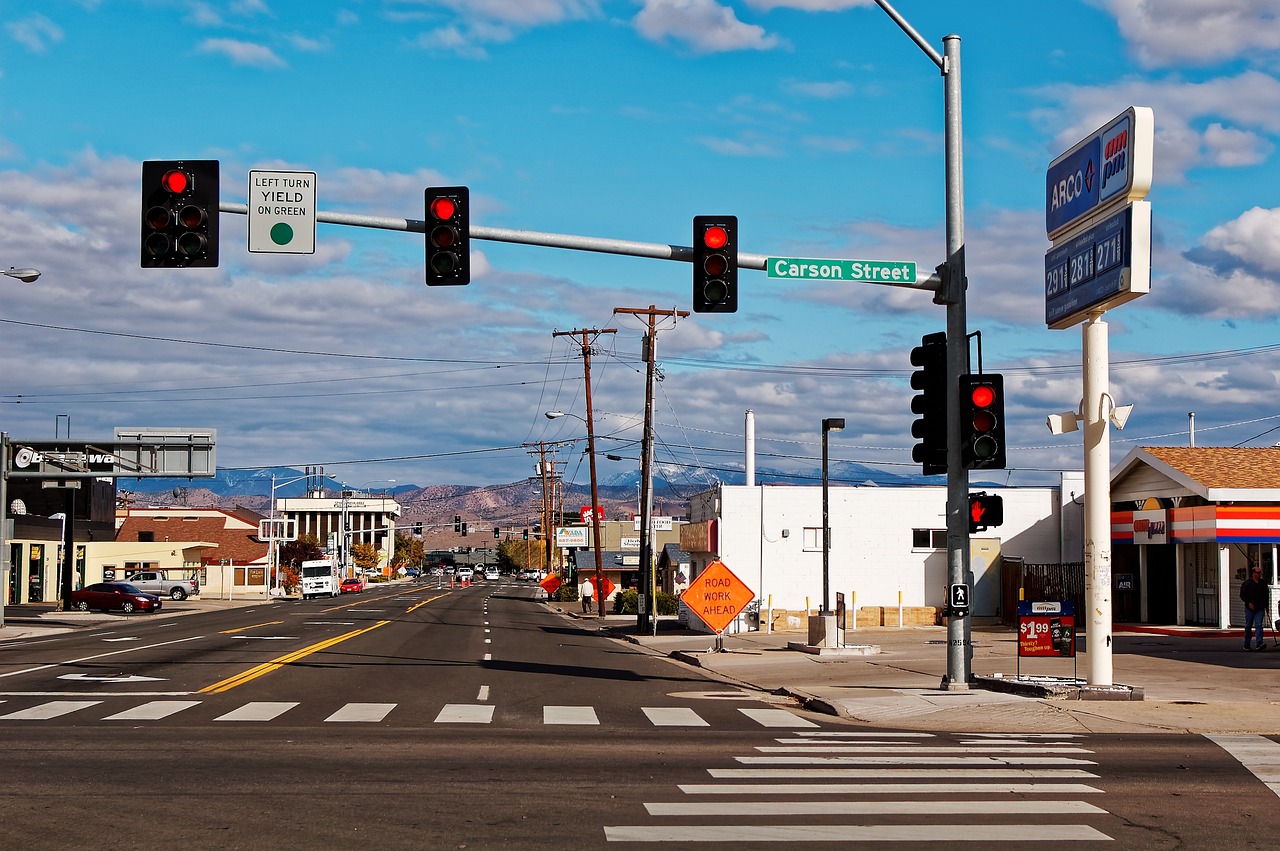
Groundbreaking Publications
Rachel Carson's contributions to environmental science are inextricably linked to her groundbreaking publications. Among her most notable works, Silent Spring stands out as a pivotal text that not only challenged the status quo but also ignited a global conversation about environmental protection. Published in 1962, this book meticulously documented the detrimental effects of pesticides on the environment, particularly focusing on the impact of DDT on bird populations. Carson's ability to weave together scientific facts with compelling narratives made her work accessible to a broad audience, transforming complex scientific concepts into relatable stories that resonated with everyday people.
Before Silent Spring, Carson had already established herself as a prominent writer and marine biologist with her earlier works. Her first book, Under the Sea-Wind, published in 1941, painted vivid portraits of marine life and ecosystems, showcasing her deep respect for nature. This was followed by The Sea Around Us in 1951, which not only won the National Book Award but also captivated readers with its poetic exploration of oceanic life. Both of these works laid the groundwork for her later environmental activism by highlighting the beauty and complexity of the natural world.
In Silent Spring, Carson detailed the insidious effects of chemical pesticides, arguing that their widespread use was not only harmful to wildlife but also posed risks to human health. She meticulously gathered data from scientific studies, government reports, and personal observations to craft a narrative that was both alarming and enlightening. Carson's eloquent prose urged readers to reconsider their relationship with nature and to recognize the interconnectedness of all living things. This was not just a book about chemicals; it was a call to action.
The impact of Silent Spring was immediate and profound. It sparked public interest and debate about environmental issues, leading to a surge in grassroots activism. People began to question the practices of the agricultural and chemical industries, demanding greater accountability and transparency. Carson's work served as a catalyst for the modern environmental movement, inspiring many to advocate for policy reforms aimed at protecting the planet.
To further illustrate the significance of Carson's publications, consider the following table that highlights her major works and their contributions:
| Title | Year | Key Themes |
|---|---|---|
| Under the Sea-Wind | 1941 | Marine life, ecological interconnections |
| The Sea Around Us | 1951 | Ocean ecosystems, environmental appreciation |
| Silent Spring | 1962 | Pesticides, environmental impact, human health |
Carson's publications not only educated the public but also laid the foundation for future environmental policies. Her work prompted the establishment of regulatory bodies, such as the Environmental Protection Agency (EPA) in the United States, which aimed to address the very issues she brought to light. By advocating for a more sustainable relationship with nature, Carson's writings continue to inspire environmentalists and policymakers alike, making her a timeless figure in the realm of ecological advocacy.
- What was the main message of Silent Spring?
Silent Spring highlighted the dangers of pesticide use, particularly DDT, and called for greater environmental awareness and policy reform. - How did Rachel Carson influence environmental policy?
Her work led to increased public awareness and the establishment of regulatory bodies aimed at protecting the environment. - What other books did Rachel Carson write?
In addition to Silent Spring, she wrote Under the Sea-Wind and The Sea Around Us, both of which focused on marine life and ecosystems.
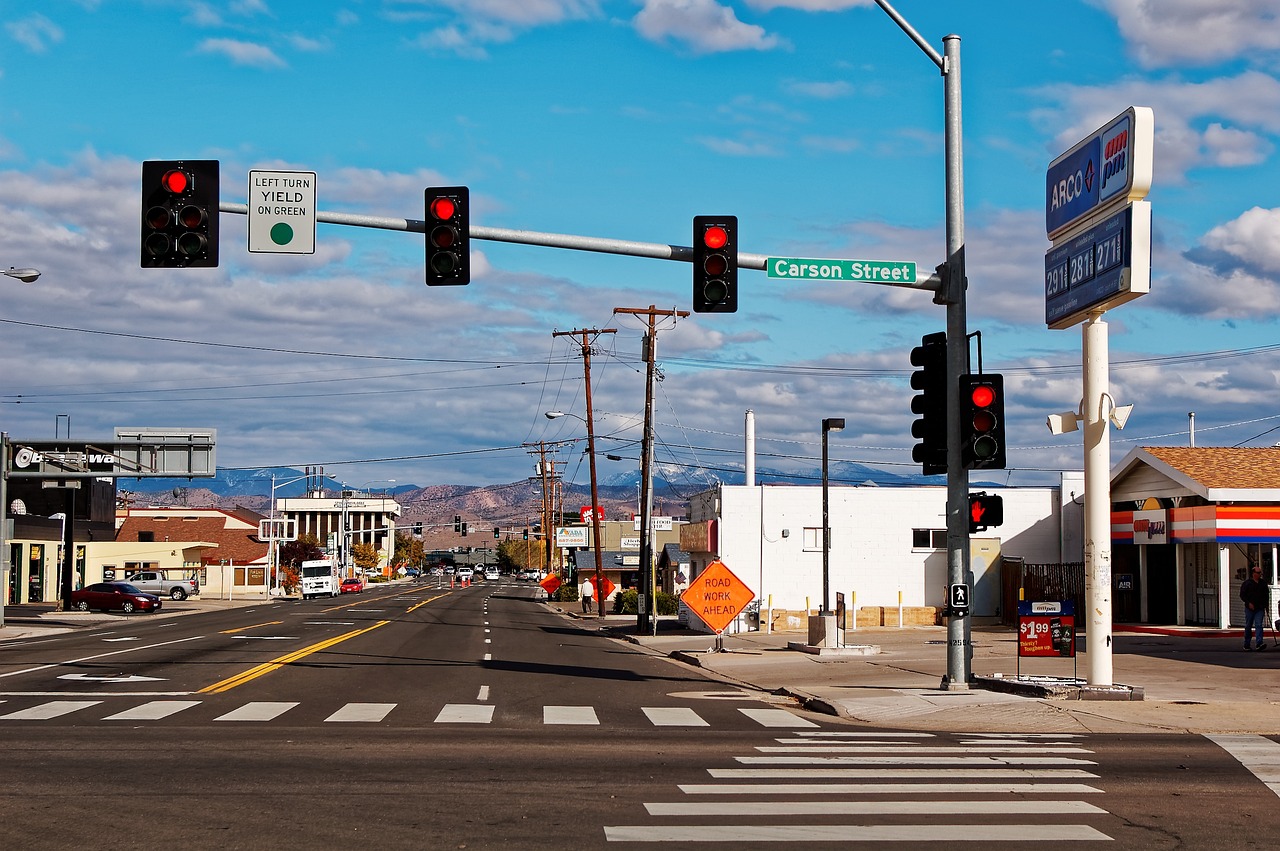
Silent Spring,
This article explores the pivotal role Rachel Carson played in environmental science, highlighting her groundbreaking work that raised awareness about ecological issues and inspired a global movement for conservation and sustainability.
Rachel Carson's formative years shaped her passion for nature and science, laying the groundwork for her future contributions to environmentalism. Her education influenced her writing style and scientific perspective.
Carson's influential works, particularly Silent Spring, challenged conventional practices and highlighted the dangers of pesticides. These publications sparked public interest and debate about environmental protection and policy reform.
Silent Spring is often regarded as a catalyst for the modern environmental movement. Its compelling narrative combined scientific research with emotional appeal, urging readers to reconsider humanity's relationship with nature. Carson meticulously documented the adverse effects of pesticides on the environment, weaving together facts and vivid imagery that painted a stark picture of ecological devastation. Her ability to connect with readers on an emotional level made the scientific data more relatable, as she described the silence that followed the death of birds and other wildlife due to chemical exposure.
The release of Silent Spring ignited fierce debate among scientists, industry leaders, and the public. Carson faced significant backlash from chemical companies and some members of the scientific community who accused her of being alarmist. However, her steadfast commitment to truth fueled the environmental discourse, leading to a re-examination of pesticide use and regulatory practices. Carson's courage in the face of criticism not only solidified her position as a leading voice in environmentalism but also inspired many to join the fight for ecological preservation.
The legacy of Silent Spring endures, influencing environmental legislation and inspiring generations of activists. Carson's work continues to resonate in contemporary discussions about sustainability and ecological integrity. Her insights laid the foundation for the establishment of the Environmental Protection Agency (EPA) and other regulatory bodies that aim to protect both public health and the environment. The book remains a touchstone in environmental literature, reminding us of the critical need for responsible stewardship of our planet.
Carson's advocacy and writings significantly impacted environmental policy, leading to the establishment of regulatory bodies and legislation aimed at protecting ecosystems and public health. Her work has been pivotal in shaping policies that govern pesticide use, wildlife protection, and conservation strategies.
Beyond her writings, Carson was a passionate advocate for conservation efforts. Her work emphasized the interconnectedness of life and the importance of preserving natural habitats for future generations.
Carson collaborated with numerous environmental organizations, helping to shape their missions and strategies. Her ability to communicate complex scientific concepts made her a valuable asset in advocacy efforts.
Rachel Carson's legacy continues to inspire environmentalists, scientists, and everyday citizens. Her commitment to ecological awareness has fostered a culture of activism that persists in addressing contemporary environmental challenges.
- What was the main message of Silent Spring?
The main message of Silent Spring was to raise awareness about the dangers of pesticide use and its detrimental effects on the environment, particularly on wildlife and human health.
- How did Silent Spring influence environmental policy?
It led to increased public concern about environmental issues, which ultimately resulted in the establishment of the Environmental Protection Agency (EPA) and the banning of certain harmful pesticides.
- Why is Rachel Carson considered a pioneer of the environmental movement?
Carson is considered a pioneer because her work not only highlighted critical environmental issues but also mobilized public opinion and inspired a generation of environmental activists.

challenged conventional practices and highlighted the dangers of pesticides. These publications sparked public interest and debate about environmental protection and policy reform.
This article explores the pivotal role Rachel Carson played in environmental science, highlighting her groundbreaking work that raised awareness about ecological issues and inspired a global movement for conservation and sustainability.
Rachel Carson's formative years shaped her passion for nature and science, laying the groundwork for her future contributions to environmentalism. Her education influenced her writing style and scientific perspective.
Carson's influential works, particularly Silent Spring, challenged conventional practices and highlighted the dangers of pesticides. These publications sparked public interest and debate about environmental protection and policy reform.
Silent Spring is often regarded as a catalyst for the modern environmental movement. Its compelling narrative combined scientific research with emotional appeal, urging readers to reconsider humanity's relationship with nature.
The release of Silent Spring ignited fierce debate among scientists, industry leaders, and the public. Carson faced significant backlash, yet her steadfast commitment to truth fueled the environmental discourse.
The legacy of Silent Spring endures, influencing environmental legislation and inspiring generations of activists. Carson's work continues to resonate in contemporary discussions about sustainability and ecological integrity.
Carson's advocacy and writings significantly impacted environmental policy, leading to the establishment of regulatory bodies and legislation aimed at protecting ecosystems and public health.
Beyond her writings, Carson was a passionate advocate for conservation efforts. Her work emphasized the interconnectedness of life and the importance of preserving natural habitats for future generations.
Carson collaborated with numerous environmental organizations, helping to shape their missions and strategies. Her ability to communicate complex scientific concepts made her a valuable asset in advocacy efforts.
Rachel Carson's legacy continues to inspire environmentalists, scientists, and everyday citizens. Her commitment to ecological awareness has fostered a culture of activism that persists in addressing contemporary environmental challenges.
Rachel Carson's works, especially Silent Spring, did more than just raise eyebrows; they challenged the status quo of agricultural practices. Before her publications, the widespread use of pesticides like DDT was largely accepted without question. Carson meticulously documented the detrimental effects these chemicals had not only on the environment but also on human health. She painted a vivid picture of a world where the balance of nature was disrupted by human intervention, likening it to a house of cards that could come tumbling down at any moment.
Through her eloquent prose, Carson urged the public to take a closer look at the **consequences of pesticide use**. The dangers she highlighted were not merely theoretical; they were backed by robust scientific research and alarming case studies. For instance, she illustrated how pesticides could seep into the soil, affecting not just the targeted pests but also beneficial insects, birds, and even humans. This was a wake-up call that resonated with many, prompting a surge in public interest regarding environmental protection.
Carson's publications didn't just spark curiosity; they ignited a fierce debate about the need for **environmental policy reform**. The discussions that emerged were not limited to scientists and policymakers; they spread to communities across the country. People began to question: Should we continue to prioritize agricultural productivity at the expense of ecological health? Are we truly aware of what we're putting into our environment?
As a result, Carson's work catalyzed a movement, leading to the establishment of various environmental regulations. The public began to advocate for cleaner, safer alternatives to harmful pesticides, and this shift in mindset laid the foundation for future environmental legislation.
- What was Rachel Carson's main contribution to environmental science?
Rachel Carson is best known for her book Silent Spring, which raised awareness about the dangers of pesticides and sparked the modern environmental movement. - How did Silent Spring influence public perception of pesticides?
Carson's thorough research and compelling writing brought to light the harmful effects of pesticides on ecosystems and human health, leading to increased public scrutiny and calls for reform. - What legacy did Rachel Carson leave behind?
Carson's work continues to inspire environmental activism and has influenced numerous environmental policies aimed at protecting natural habitats and public health.
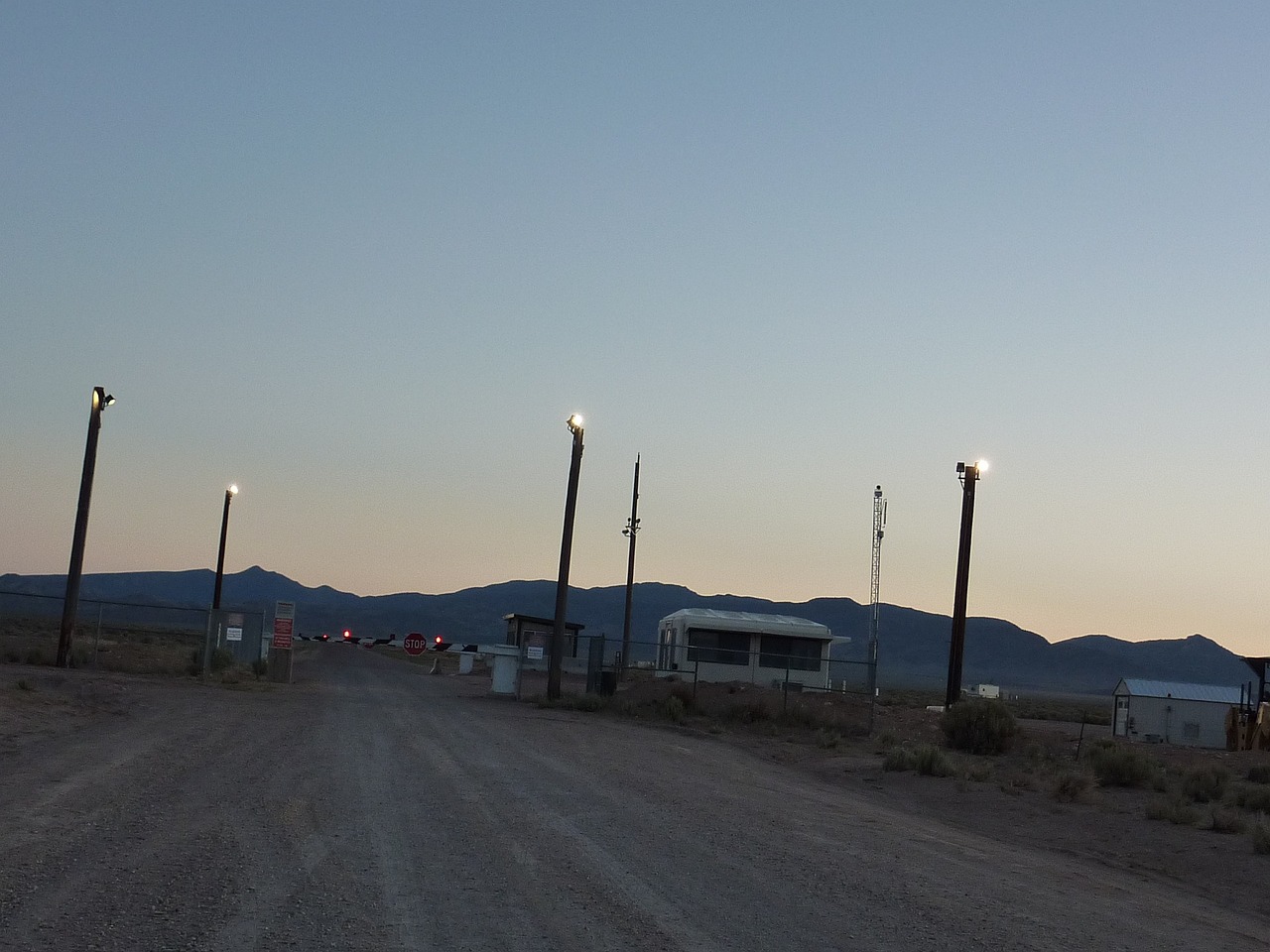
Silent Spring: A Turning Point
Silent Spring is more than just a book; it is a profound awakening that rattled the very foundations of environmental awareness. Published in 1962, Rachel Carson's masterpiece combined meticulous scientific research with a compelling narrative that struck a chord with a wide audience. Imagine a world where the songs of birds were silenced by the very chemicals humans believed would protect their crops. Carson painted this vivid picture, urging readers to reconsider their relationship with nature. Her words resonated deeply, as they not only informed but also evoked an emotional response that compelled people to take action.
This groundbreaking work challenged the prevailing wisdom of the time, which often prioritized industrial growth and agricultural productivity over ecological health. Carson meticulously documented the adverse effects of pesticides, particularly DDT, on wildlife and human health. She argued that these chemicals did not merely vanish after application; instead, they accumulated in the environment, leading to devastating consequences. In doing so, she forced society to confront uncomfortable truths about the impact of human actions on the planet.
The book's release marked a turning point in public consciousness regarding environmental issues. It sparked a national conversation about the ethical implications of pesticide use and the broader consequences of human intervention in nature. People began to question:
- What are the long-term effects of chemicals on our health and ecosystems?
- Can we truly call ourselves stewards of the Earth if we are willing to sacrifice its beauty and integrity for short-term gains?
- How can we balance technological advancement with the preservation of our natural world?
Carson's ability to weave science with storytelling was revolutionary. She transformed complex scientific ideas into accessible language, making them relatable to the average reader. This approach not only educated but also inspired action. The emotional weight of her writing encouraged individuals to advocate for change, leading to a burgeoning environmental movement. As people read her words, they could envision a healthier planet, one where nature thrived instead of merely surviving amidst human activity.
The impact of Silent Spring extended far beyond its initial publication. It laid the groundwork for future environmental legislation and the establishment of regulatory bodies aimed at protecting public health and ecosystems. Carson's work illuminated the interconnectedness of life, emphasizing that harming one aspect of the environment ultimately harms all. This holistic view continues to influence environmental discourse today, reminding us that every action has a ripple effect.
In essence, Silent Spring was not just a book; it was a clarion call for change. It ignited a passion for conservation and sustainability that has persisted through the decades. Carson's legacy lives on, reminding us that we have the power to shape the future of our planet. As we reflect on her contributions, we must ask ourselves: Are we listening to the lessons she imparted? Are we willing to act for the sake of our environment and future generations?
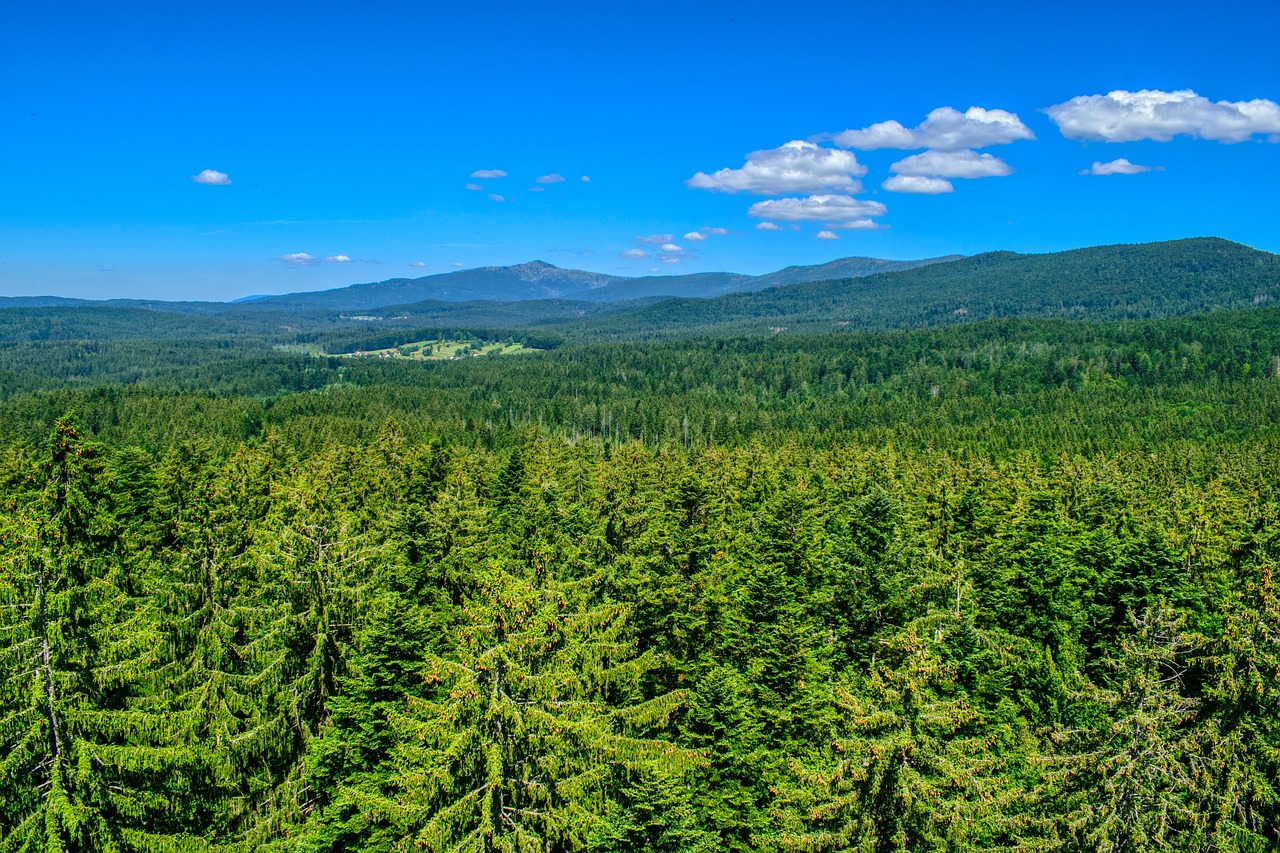
Silent Spring
is often regarded as a catalyst for the modern environmental movement, and it's not hard to see why. Released in 1962, this groundbreaking book by Rachel Carson brought to light the alarming effects of pesticides on the environment, particularly focusing on the chemical DDT. Carson's ability to weave together scientific research with a compelling narrative made her message resonate deeply with the public. Imagine reading a book that not only educates you but also stirs your emotions—this is exactly what Carson achieved. She didn't just present facts; she painted a vivid picture of a world where nature was being systematically poisoned.
One of the most striking aspects of is how Carson connected the dots between human actions and the health of our planet. She described the intricate web of life and how every action we take has consequences, much like a stone thrown into a pond creates ripples that spread far and wide. Through her eloquent prose, she urged readers to reconsider their relationship with nature, emphasizing that we are not separate from the environment but rather a part of it. This perspective was revolutionary at the time and continues to influence environmental thought today.
Carson's work was not merely an academic endeavor; it was a clarion call for change. She meticulously documented the harmful impacts of pesticides on wildlife, particularly birds, and illustrated how these chemicals could infiltrate the food chain, affecting not just animals but humans as well. Her ability to convey complex scientific concepts in an accessible manner made the book a bestseller and a cornerstone of environmental literature.
As readers absorbed the information Carson presented, many found themselves grappling with a new understanding of their role in the ecosystem. opened the floodgates for public discourse on environmental issues, prompting individuals and communities to take action against pollution and advocate for more sustainable practices. The book's publication sparked widespread concern and led to the questioning of government policies regarding pesticide regulation. Carson's courage in speaking out against powerful chemical industries is a testament to her unwavering commitment to truth and transparency.
In the aftermath of , the environmental movement began to gain momentum. The book not only raised awareness but also inspired a generation of activists who would go on to fight for environmental protection. It laid the groundwork for future legislation aimed at safeguarding ecosystems and public health. Carson's legacy is evident in the establishment of the U.S. Environmental Protection Agency and the eventual banning of DDT in many countries.
To summarize, was more than just a book; it was a movement. Carson's eloquent writing and passionate advocacy transformed the way we view our responsibility towards the environment. Her work continues to resonate, reminding us that we must tread lightly on this Earth and protect the fragile ecosystems that sustain us.
- What was the main message of Silent Spring?
Rachel Carson's main message was to highlight the dangers of pesticides and the need for responsible environmental stewardship. - How did Silent Spring impact environmental policy?
The book led to increased public awareness and ultimately contributed to the establishment of regulatory bodies like the EPA. - Why is Silent Spring considered a turning point?
It challenged the prevailing views on chemical use and sparked a global conversation about environmental conservation. - What legacy did Rachel Carson leave behind?
Her work inspired generations of environmental activists and continues to influence discussions about sustainability today.
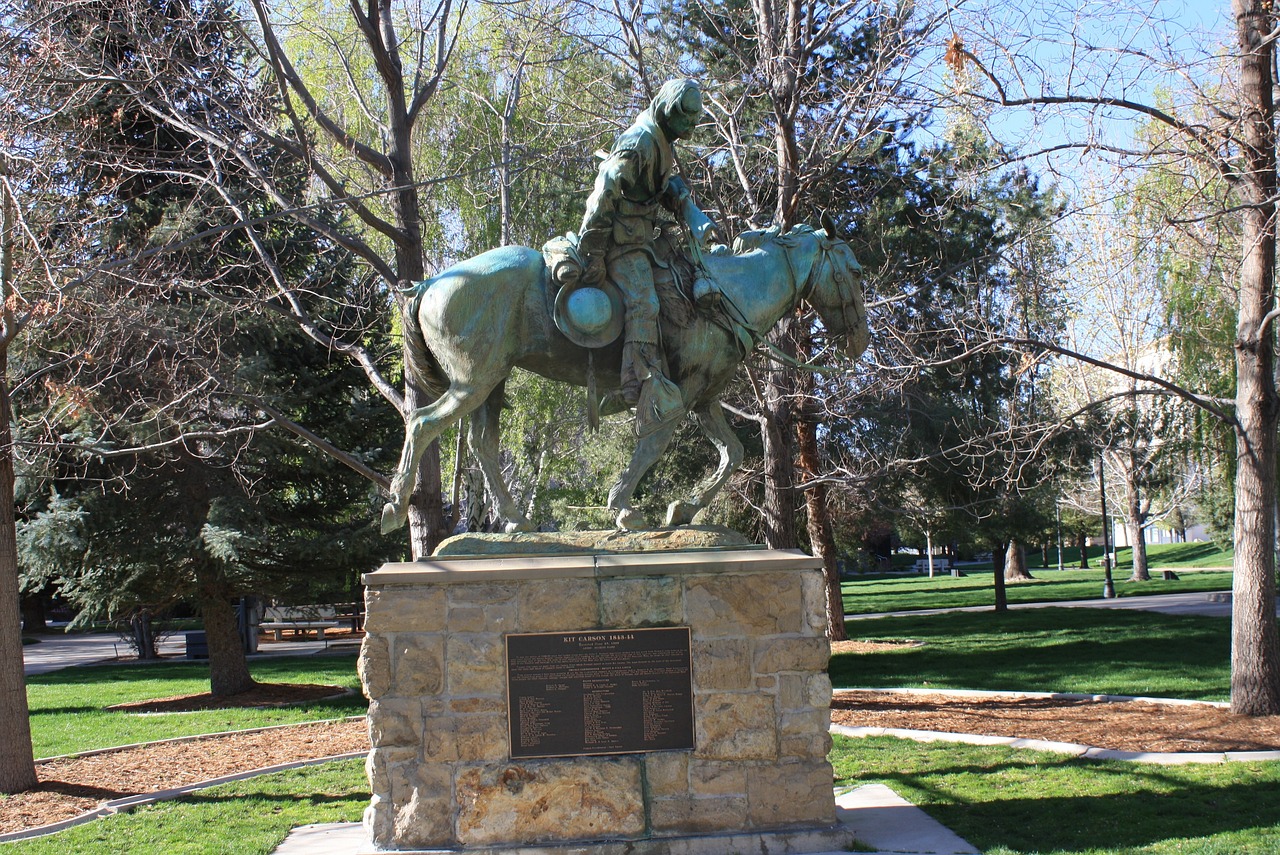
is often regarded as a catalyst for the modern environmental movement. Its compelling narrative combined scientific research with emotional appeal, urging readers to reconsider humanity's relationship with nature.
This article explores the pivotal role Rachel Carson played in environmental science, highlighting her groundbreaking work that raised awareness about ecological issues and inspired a global movement for conservation and sustainability.
Rachel Carson's formative years shaped her passion for nature and science, laying the groundwork for her future contributions to environmentalism. Her education influenced her writing style and scientific perspective.
Carson's influential works, particularly Silent Spring, challenged conventional practices and highlighted the dangers of pesticides. These publications sparked public interest and debate about environmental protection and policy reform.
Silent Spring is often regarded as a catalyst for the modern environmental movement. Its compelling narrative combined scientific research with emotional appeal, urging readers to reconsider humanity's relationship with nature. Carson's unique ability to weave together factual evidence with poignant storytelling made the book not just a scientific work, but a literary masterpiece that resonated deeply with the public. She painted a vivid picture of a world where the harmony of nature was disrupted by the reckless use of chemicals, compelling readers to envision a future where the environment was safeguarded.
In her book, Carson employed a range of literary techniques that enhanced her message. For instance, she used:
- Metaphors: Carson likened the use of pesticides to a "silent spring," suggesting that a world devoid of birdsong and natural beauty was on the horizon if humanity continued down its current path.
- Emotional Narratives: Through personal stories and vivid descriptions of nature, she evoked a sense of loss and urgency, making the scientific data more relatable and impactful.
- Scientific Evidence: Carson backed her claims with rigorous research, citing studies and expert opinions that lent credibility to her arguments.
Through these techniques, Carson not only informed her audience but also inspired a sense of responsibility towards the environment. Her work urged individuals to take action, sparking a wave of environmental consciousness that led to grassroots movements and policy changes aimed at protecting the Earth.
The release of Silent Spring ignited fierce debate among scientists, industry leaders, and the public. Carson faced significant backlash, yet her steadfast commitment to truth fueled the environmental discourse.
The legacy of Silent Spring endures, influencing environmental legislation and inspiring generations of activists. Carson's work continues to resonate in contemporary discussions about sustainability and ecological integrity.
Carson's advocacy and writings significantly impacted environmental policy, leading to the establishment of regulatory bodies and legislation aimed at protecting ecosystems and public health.
Beyond her writings, Carson was a passionate advocate for conservation efforts. Her work emphasized the interconnectedness of life and the importance of preserving natural habitats for future generations.
Carson collaborated with numerous environmental organizations, helping to shape their missions and strategies. Her ability to communicate complex scientific concepts made her a valuable asset in advocacy efforts.
Rachel Carson's legacy continues to inspire environmentalists, scientists, and everyday citizens. Her commitment to ecological awareness has fostered a culture of activism that persists in addressing contemporary environmental challenges.
- What was Rachel Carson's most famous book?
Her most famous book is Silent Spring, which highlighted the dangers of pesticides and their impact on the environment. - How did Rachel Carson influence environmental policy?
Carson's work led to increased awareness of environmental issues, which resulted in the establishment of regulatory bodies like the Environmental Protection Agency (EPA) in the United States. - What is the significance of Silent Spring today?
Silent Spring remains a foundational text in environmental literature, inspiring ongoing discussions about sustainability, conservation, and our relationship with nature.
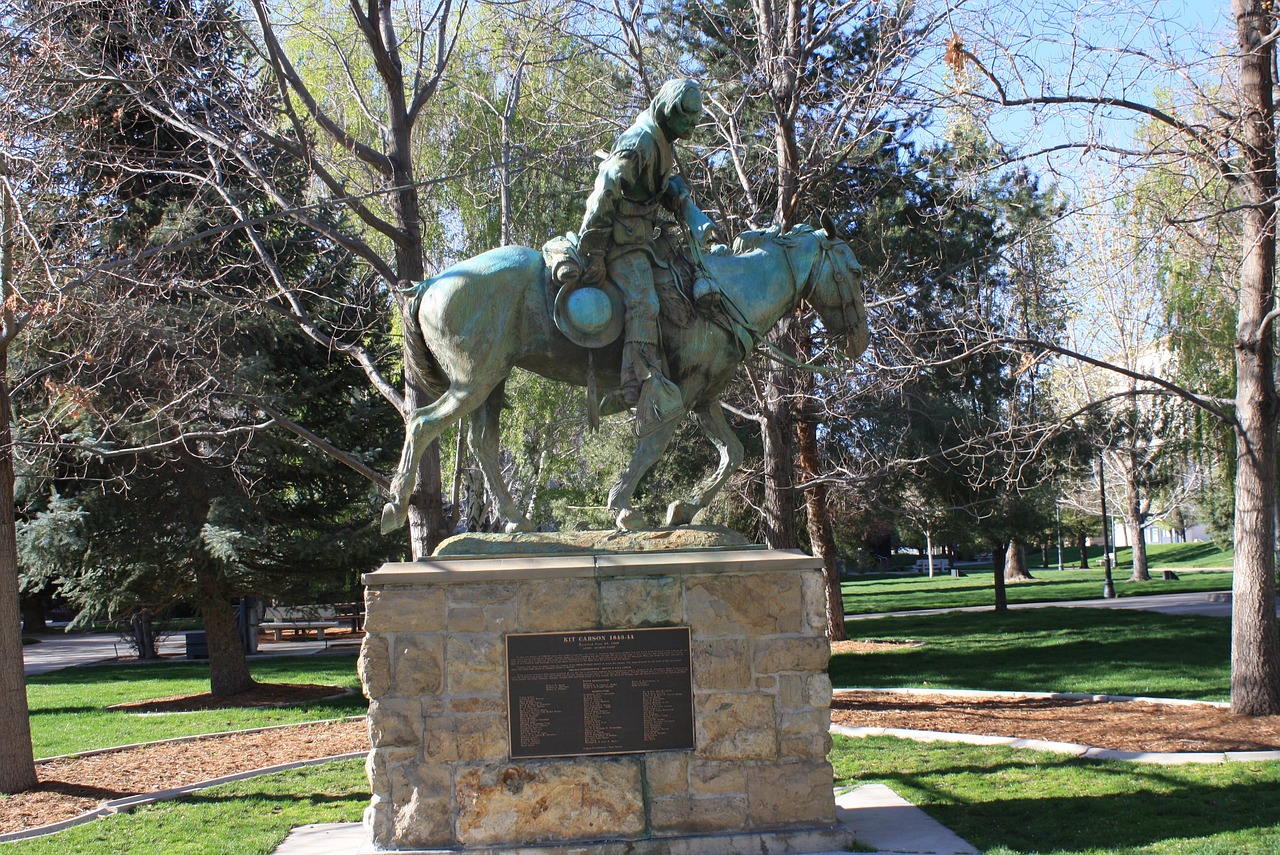
Public Reaction and Controversy
The release of Silent Spring in 1962 was nothing short of a seismic event in the world of environmental science. Rachel Carson's bold assertions challenged the status quo, leading to a wave of public reaction that was as passionate as it was polarized. On one hand, many readers were captivated by her compelling narrative, which seamlessly wove together scientific research and emotional storytelling. They were awakened to the hidden dangers of pesticides and the broader implications for the environment. Carson's ability to communicate complex ideas in a relatable manner struck a chord with the public, igniting a newfound awareness about the fragility of ecosystems.
However, not everyone was on board with Carson's message. The chemical industry, in particular, was quick to respond with fierce opposition. They argued that her claims were exaggerated and that pesticides were essential for agricultural productivity. This led to a significant backlash against Carson, with some critics labeling her as an alarmist. The controversy reached a boiling point, drawing in scientists, policymakers, and the general public into heated debates about environmental safety and the ethics of pesticide use.
To illustrate the divide in public opinion, consider the following table that summarizes the reactions from various stakeholders:
| Stakeholder Group | Reaction |
|---|---|
| General Public | Increased awareness and support for environmental protection |
| Chemical Industry | Strong opposition, claims of exaggeration |
| Scientists | Divided; some supported Carson, others criticized her methods |
| Government Officials | Pressure to investigate pesticide regulations |
This controversy was not just a fleeting moment in time; it transformed into a broader dialogue about humanity's relationship with nature. Carson's steadfast commitment to her research and the truth ultimately fueled the environmental discourse, encouraging people to question the practices that had long been accepted without scrutiny. Despite the backlash, her work laid the groundwork for future environmental advocacy, proving that sometimes, speaking the truth can be a revolutionary act.
As the debates raged on, Carson remained resolute. She understood that the path to change is often fraught with challenges, but her courage and determination inspired countless individuals to join the cause. The fallout from Silent Spring not only brought environmental issues to the forefront of public consciousness but also set the stage for the establishment of regulatory bodies and legislation aimed at protecting our planet.
- What was the main message of Silent Spring?
Silent Spring highlighted the dangers of pesticides and their impact on the environment, urging society to reconsider its relationship with nature.
- How did the chemical industry respond to Rachel Carson?
The chemical industry mounted a strong opposition, accusing Carson of exaggerating the dangers of pesticides.
- What impact did Silent Spring have on environmental policy?
Carson's work led to increased public awareness and ultimately contributed to the establishment of regulatory bodies focused on environmental protection.
- Is Rachel Carson still relevant today?
Absolutely! Her legacy continues to inspire environmentalists and activists who fight for sustainability and ecological integrity.
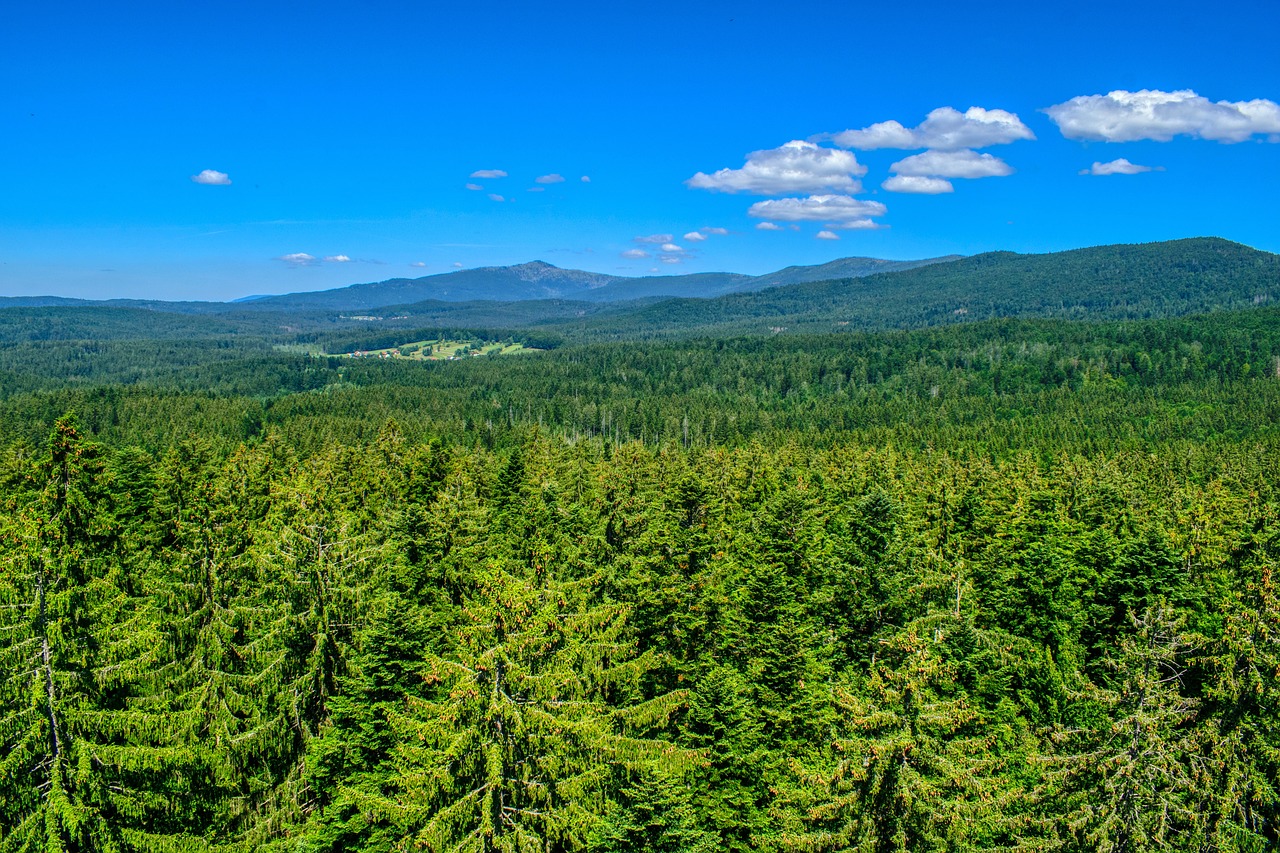
Silent Spring
This article explores the pivotal role Rachel Carson played in environmental science, highlighting her groundbreaking work that raised awareness about ecological issues and inspired a global movement for conservation and sustainability.
Rachel Carson's formative years shaped her passion for nature and science, laying the groundwork for her future contributions to environmentalism. Her education influenced her writing style and scientific perspective.
Carson's influential works, particularly , challenged conventional practices and highlighted the dangers of pesticides. These publications sparked public interest and debate about environmental protection and policy reform.
is often regarded as a catalyst for the modern environmental movement. Its compelling narrative combined scientific research with emotional appeal, urging readers to reconsider humanity's relationship with nature. Carson meticulously documented the adverse effects of pesticides on the environment, weaving together personal anecdotes, scientific data, and vivid imagery to create a narrative that was both informative and poignant. The book painted a stark picture of a world where the harmony of nature was disrupted by human actions, making it impossible for readers to ignore the message. Carson's use of language was not just about conveying facts; it was about stirring emotions and prompting reflection.
The release of ignited fierce debate among scientists, industry leaders, and the public. Carson faced significant backlash, yet her steadfast commitment to truth fueled the environmental discourse. Critics, particularly from the chemical industry, dismissed her findings as alarmist and unscientific, arguing that pesticides were essential for agricultural productivity. However, Carson's dedication to her research and her ability to articulate the potential consequences of pesticide use garnered a loyal following. The book prompted a re-evaluation of pesticide regulations and led to increased scrutiny of environmental practices.
The legacy of endures, influencing environmental legislation and inspiring generations of activists. Carson's work continues to resonate in contemporary discussions about sustainability and ecological integrity. The book's impact can be seen in various environmental policies, including the eventual establishment of the Environmental Protection Agency (EPA) in the United States. It also sparked a broader environmental movement that has led to increased awareness and activism around issues such as biodiversity, climate change, and pollution. Carson's voice remains a guiding light for those advocating for the planet, reminding us of the urgent need to protect our natural world.
Carson's advocacy and writings significantly impacted environmental policy, leading to the establishment of regulatory bodies and legislation aimed at protecting ecosystems and public health.
Beyond her writings, Carson was a passionate advocate for conservation efforts. Her work emphasized the interconnectedness of life and the importance of preserving natural habitats for future generations.
Carson collaborated with numerous environmental organizations, helping to shape their missions and strategies. Her ability to communicate complex scientific concepts made her a valuable asset in advocacy efforts.
Rachel Carson's legacy continues to inspire environmentalists, scientists, and everyday citizens. Her commitment to ecological awareness has fostered a culture of activism that persists in addressing contemporary environmental challenges.
- What was the main message of Silent Spring?
The main message of was to raise awareness about the dangers of pesticides and their impact on the environment, urging a reevaluation of humanity's relationship with nature.
- How did Silent Spring influence environmental policy?
The book led to increased scrutiny of pesticide use, contributed to the establishment of the Environmental Protection Agency, and inspired legislation aimed at protecting the environment.
- What is Rachel Carson's legacy?
Rachel Carson's legacy lies in her role as a pioneer of the environmental movement, inspiring generations to advocate for ecological integrity and sustainability.
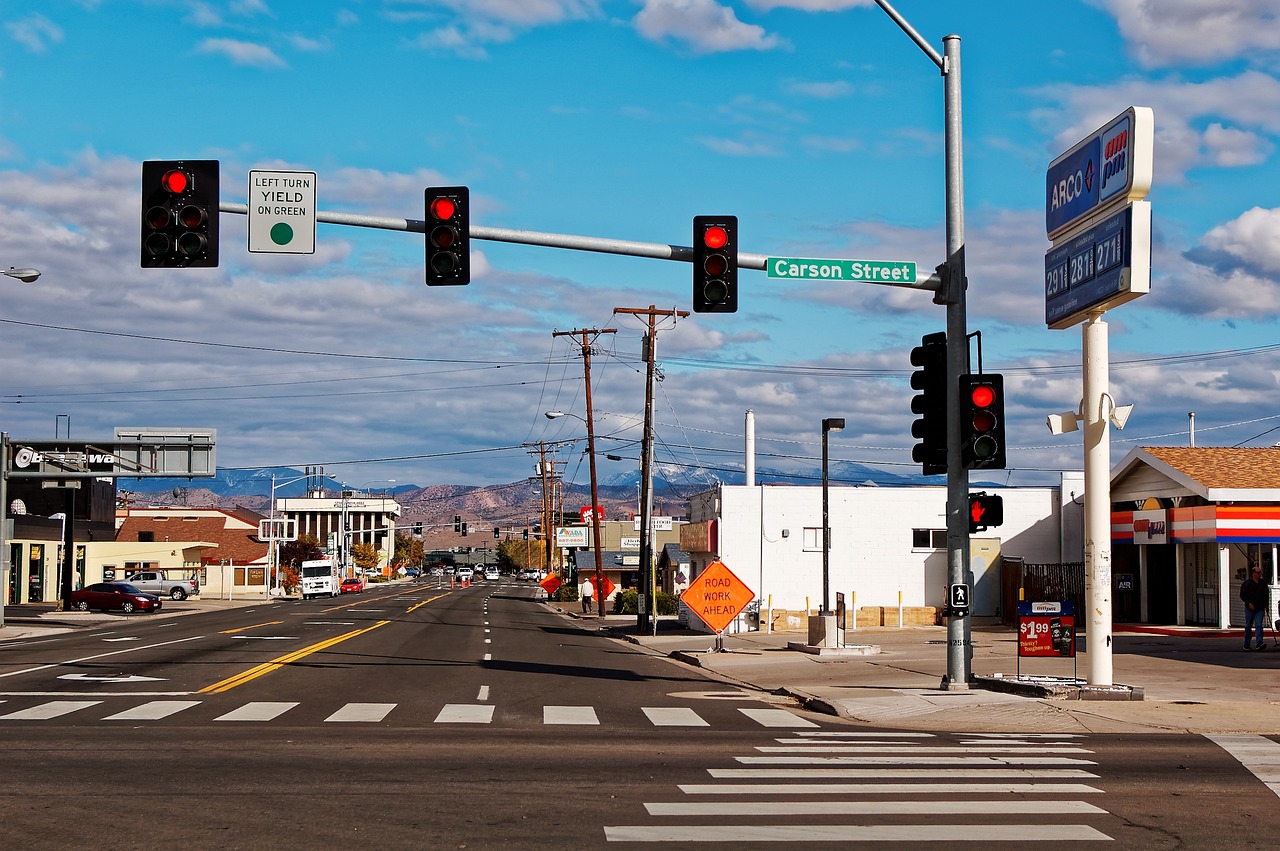
ignited fierce debate among scientists, industry leaders, and the public. Carson faced significant backlash, yet her steadfast commitment to truth fueled the environmental discourse.
This article explores the pivotal role Rachel Carson played in environmental science, highlighting her groundbreaking work that raised awareness about ecological issues and inspired a global movement for conservation and sustainability.
Rachel Carson's formative years shaped her passion for nature and science, laying the groundwork for her future contributions to environmentalism. Her education influenced her writing style and scientific perspective.
Carson's influential works, particularly Silent Spring, challenged conventional practices and highlighted the dangers of pesticides. These publications sparked public interest and debate about environmental protection and policy reform.
Silent Spring is often regarded as a catalyst for the modern environmental movement. Its compelling narrative combined scientific research with emotional appeal, urging readers to reconsider humanity's relationship with nature.
The release of Silent Spring ignited fierce debate among scientists, industry leaders, and the public. Carson faced significant backlash, yet her steadfast commitment to truth fueled the environmental discourse. Critics from various sectors—ranging from chemical companies to some in the scientific community—argued that Carson's claims were exaggerated and unfounded. They contended that the benefits of pesticides outweighed their risks, leading to a polarized discussion that captivated the nation.
Despite the criticism, Carson remained unyielding in her stance. She understood that the truth of her findings was not merely a matter of scientific debate but a moral obligation to protect the environment and public health. This unwavering dedication to her cause not only solidified her credibility but also inspired countless individuals to join the fight for ecological awareness.
Her work prompted a re-evaluation of regulatory practices regarding chemical use. The controversy surrounding her findings led to a heightened public interest in environmental issues, as citizens began to question the safety of the products they used daily. Carson’s ability to articulate complex scientific concepts in a relatable manner played a crucial role in bridging the gap between science and the public.
As a result, the environmental discourse that Carson ignited was not just a fleeting moment; it became a foundational pillar for the burgeoning environmental movement. The debates sparked by Silent Spring laid the groundwork for future discussions around sustainability, conservation, and ecological integrity.
The legacy of Silent Spring endures, influencing environmental legislation and inspiring generations of activists. Carson's work continues to resonate in contemporary discussions about sustainability and ecological integrity.
Carson's advocacy and writings significantly impacted environmental policy, leading to the establishment of regulatory bodies and legislation aimed at protecting ecosystems and public health.
Beyond her writings, Carson was a passionate advocate for conservation efforts. Her work emphasized the interconnectedness of life and the importance of preserving natural habitats for future generations.
Carson collaborated with numerous environmental organizations, helping to shape their missions and strategies. Her ability to communicate complex scientific concepts made her a valuable asset in advocacy efforts.
Rachel Carson's legacy continues to inspire environmentalists, scientists, and everyday citizens. Her commitment to ecological awareness has fostered a culture of activism that persists in addressing contemporary environmental challenges.
- What was Rachel Carson's most famous book?
Her most famous book is Silent Spring, which raised awareness about the dangers of pesticides.
- How did Silent Spring influence environmental policy?
It led to increased public awareness and ultimately influenced legislation aimed at environmental protection.
- What was the main message of Rachel Carson's work?
Carson emphasized the interconnectedness of all living things and the need for sustainable practices to protect the environment.
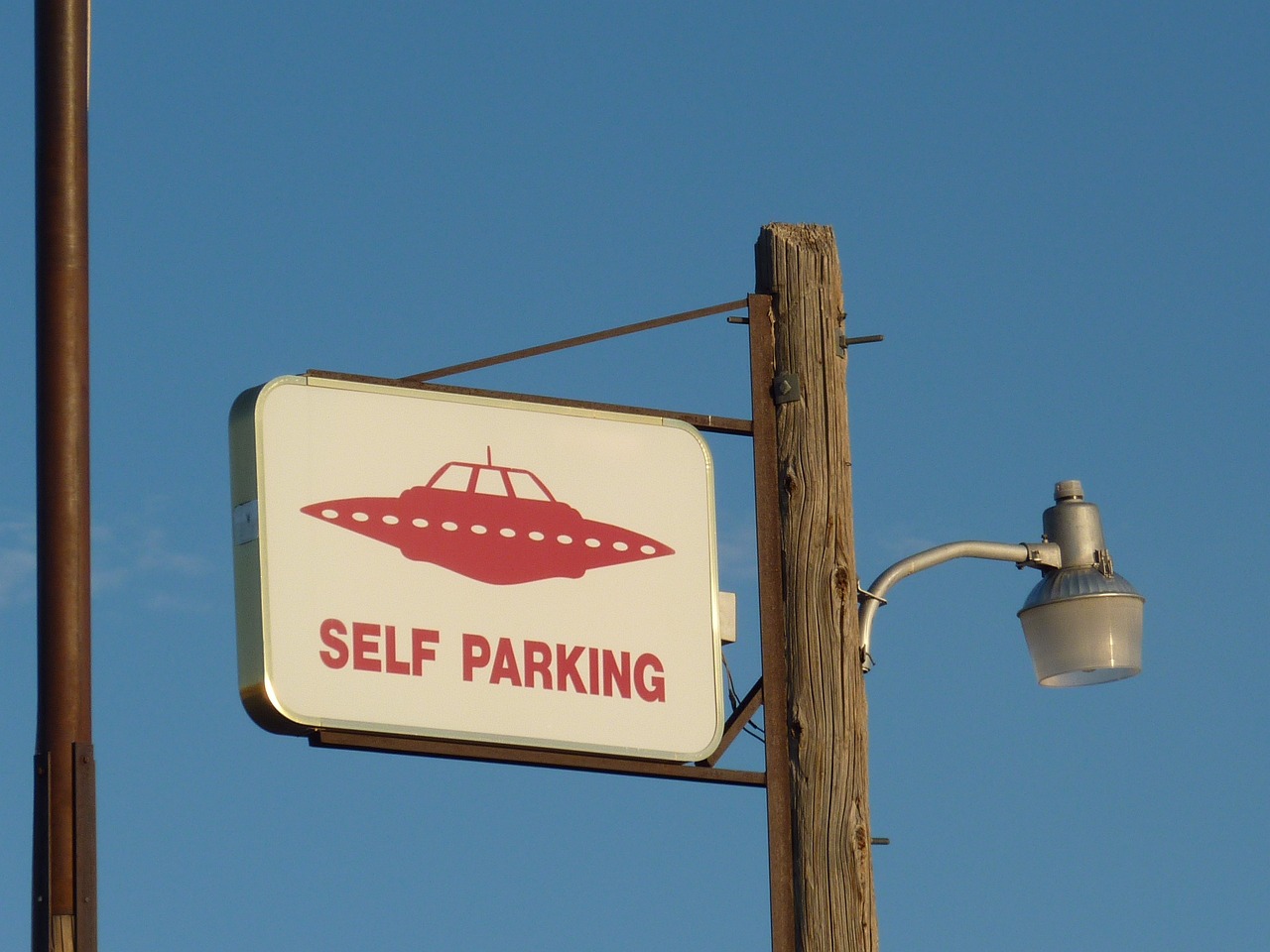
Legacy of Silent Spring
Silent Spring has left an indelible mark on environmental science and public consciousness. Published in 1962, this groundbreaking book not only challenged the status quo regarding pesticide use but also ignited a fervent discussion about humanity's impact on the natural world. Carson's meticulous research and eloquent prose combined to create a narrative that was both scientifically sound and emotionally compelling. It was as if she held up a mirror to society, reflecting the consequences of its actions and urging a reevaluation of our relationship with nature.
The legacy of Silent Spring extends far beyond its pages. It acted as a catalyst for the modern environmental movement, inspiring a wave of activism that sought to protect the planet. Following its release, there was a significant increase in public awareness and concern regarding environmental issues. This book not only educated readers but also mobilized them, leading to the formation of various environmental organizations and initiatives. The book's impact can be summarized in several key ways:
- Legislative Changes: Carson’s work played a pivotal role in the eventual establishment of the Environmental Protection Agency (EPA) in the United States in 1970. This agency was created to regulate and enforce laws that protect the environment and public health.
- Public Awareness: The book sparked widespread public interest in environmental issues, leading to the first Earth Day celebrations in 1970, which mobilized millions of people to advocate for a healthier planet.
- Scientific Inquiry: Carson's work encouraged scientists to investigate the ecological impacts of chemicals and pesticides, leading to a broader understanding of environmental science and ecology.
Moreover, Carson's legacy is evident in how environmental policies are shaped today. Many of the discussions around sustainability, biodiversity, and conservation can be traced back to the alarm she raised. Her ability to blend scientific facts with a narrative that tugged at the heartstrings of her readers made her a unique figure in the realm of environmental advocacy. Carson's commitment to truth and her courage to speak out against powerful industries resonate with activists today, reminding us that one voice can indeed spark a revolution.
Even decades after its publication, Silent Spring continues to be a vital reference point in environmental discussions. It serves as a reminder of the interconnectedness of life and the delicate balance of ecosystems. Carson's insights have paved the way for ongoing dialogues about sustainable practices and the ethical responsibilities of humanity towards the environment. Her legacy is not just about the past; it is a call to action for future generations to remain vigilant and proactive in the face of ecological challenges.
In conclusion, Rachel Carson's Silent Spring remains a powerful symbol of environmental awareness and advocacy. It is a testament to the profound impact one individual can have on the world. As we navigate the complexities of modern environmental issues, Carson's words continue to inspire and challenge us to protect our planet for future generations.
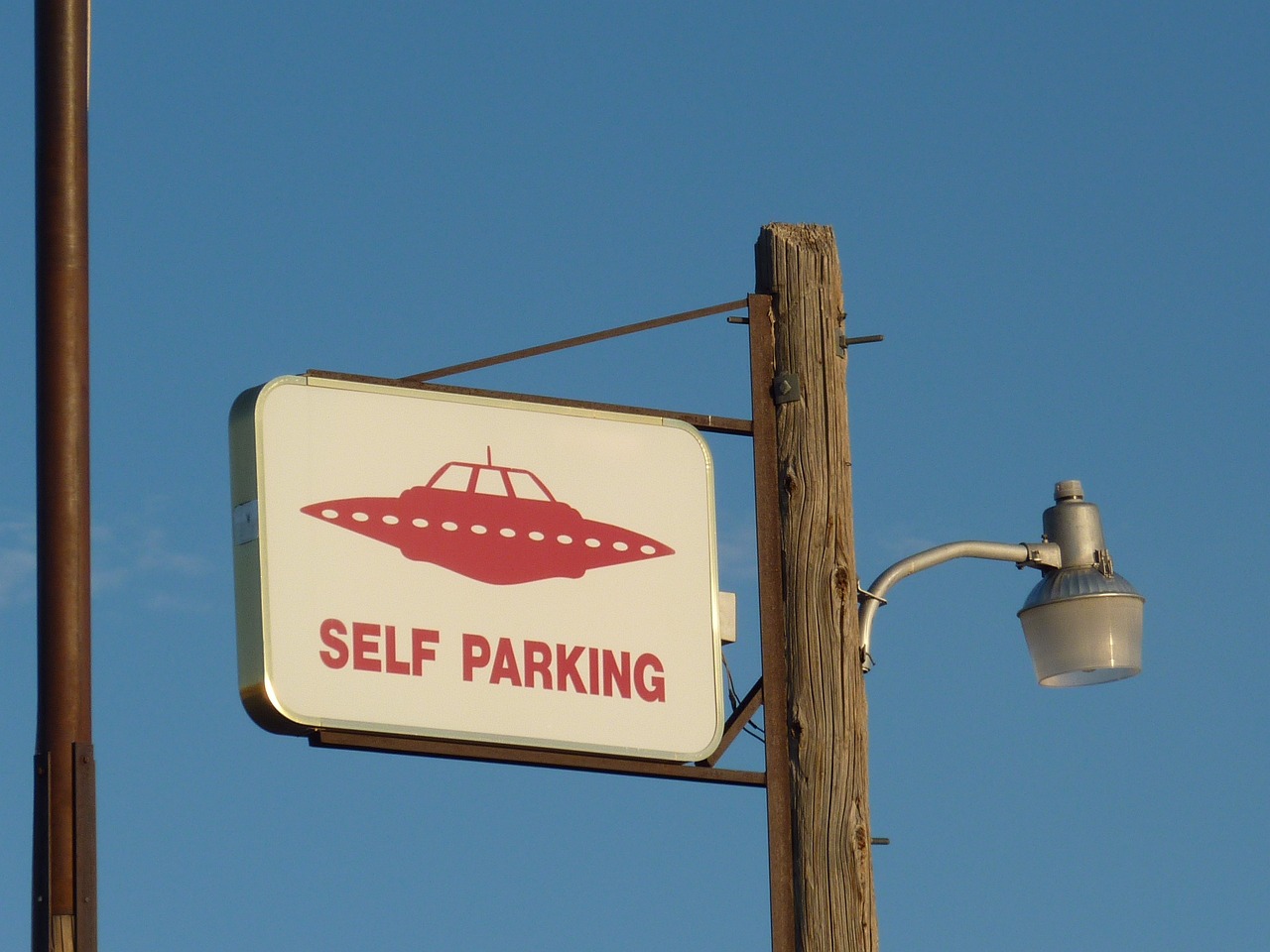
Silent Spring
is often hailed as a groundbreaking work that not only changed the landscape of environmental science but also ignited a fire within the hearts of ordinary citizens. Published in 1962, this remarkable book was Rachel Carson's clarion call, warning us about the detrimental effects of pesticides on the environment. Imagine a world where the vibrant songs of birds were silenced by the very chemicals designed to protect crops! Carson painted a vivid picture of this potential reality, compelling readers to confront the consequences of human actions on nature.
What makes so impactful is its unique blend of scientific rigor and emotional storytelling. Carson meticulously documented the harmful effects of pesticides, particularly DDT, on wildlife and ecosystems, but she didn't stop there. She wove personal narratives and poetic language throughout her work, making the scientific data accessible and relatable. This approach helped bridge the gap between scientific communities and the general public, allowing everyone to understand the urgent need for environmental protection.
In her book, Carson emphasized the concept of interconnectedness—the idea that all living organisms are part of a larger web of life. She argued that the use of synthetic pesticides disrupts this delicate balance, leading to unforeseen consequences. For instance, the decline of bird populations due to pesticide exposure not only affects the birds themselves but also impacts the entire ecosystem, including plants and other animals that rely on them. Carson's insights prompted readers to rethink their relationship with nature, urging them to consider the long-term effects of their actions.
The publication of did not come without its challenges. Carson faced fierce opposition from chemical companies and some sectors of the scientific community, who labeled her as alarmist. Despite the criticism, she remained steadfast, driven by a deep commitment to truth and environmental justice. Her courage in the face of adversity inspired countless individuals to advocate for change and question the status quo.
As we reflect on the legacy of , it is clear that its influence extends far beyond its publication date. The book is credited with launching the modern environmental movement, leading to significant policy changes and the establishment of regulatory bodies dedicated to protecting the environment. Carson's work has become a cornerstone of environmental literature, inspiring generations of activists and researchers to continue the fight for a sustainable future.
In summary, is not just a book; it is a powerful reminder of our responsibility to protect the planet. Rachel Carson's eloquent prose and unwavering dedication have left an indelible mark on environmental science and advocacy, urging us all to listen to the whispers of nature and take action before it is too late.
- What was the main message of Silent Spring?
The main message of was to raise awareness about the dangers of pesticides, emphasizing the interconnectedness of all living organisms and the need for environmental protection.
- How did Silent Spring impact environmental policy?
played a crucial role in shaping environmental policy by highlighting the negative effects of chemical pesticides, leading to regulatory changes and the establishment of organizations focused on environmental conservation.
- Why is Rachel Carson considered a pioneer in environmental science?
Rachel Carson is considered a pioneer in environmental science due to her ability to combine scientific research with compelling storytelling, making complex issues accessible to the general public and inspiring a global movement for conservation.
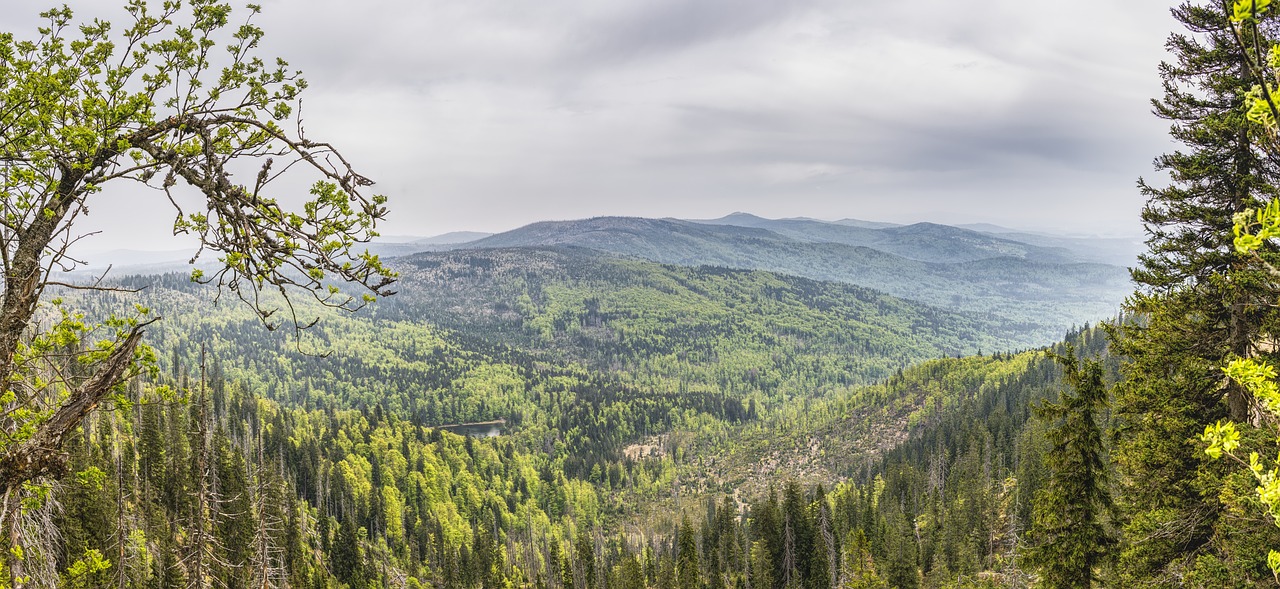
endures, influencing environmental legislation and inspiring generations of activists. Carson's work continues to resonate in contemporary discussions about sustainability and ecological integrity.
This article explores the pivotal role Rachel Carson played in environmental science, highlighting her groundbreaking work that raised awareness about ecological issues and inspired a global movement for conservation and sustainability.
Rachel Carson's formative years shaped her passion for nature and science, laying the groundwork for her future contributions to environmentalism. Her education influenced her writing style and scientific perspective.
Carson's influential works, particularly Silent Spring, challenged conventional practices and highlighted the dangers of pesticides. These publications sparked public interest and debate about environmental protection and policy reform.
Silent Spring is often regarded as a catalyst for the modern environmental movement. Its compelling narrative combined scientific research with emotional appeal, urging readers to reconsider humanity's relationship with nature.
The release of Silent Spring ignited fierce debate among scientists, industry leaders, and the public. Carson faced significant backlash, yet her steadfast commitment to truth fueled the environmental discourse.
The legacy of Silent Spring endures, influencing environmental legislation and inspiring generations of activists. Carson's work continues to resonate in contemporary discussions about sustainability and ecological integrity.
Carson's advocacy and writings significantly impacted environmental policy, leading to the establishment of regulatory bodies and legislation aimed at protecting ecosystems and public health.
Beyond her writings, Carson was a passionate advocate for conservation efforts. Her work emphasized the interconnectedness of life and the importance of preserving natural habitats for future generations.
Carson collaborated with numerous environmental organizations, helping to shape their missions and strategies. Her ability to communicate complex scientific concepts made her a valuable asset in advocacy efforts.
Rachel Carson's legacy continues to inspire environmentalists, scientists, and everyday citizens. Her commitment to ecological awareness has fostered a culture of activism that persists in addressing contemporary environmental challenges.
The impact of Silent Spring is not just a chapter in history; it is a living testament to the power of words and the importance of environmental stewardship. Carson's insights have led to significant changes in legislation, such as the establishment of the Environmental Protection Agency (EPA) in the United States. Her work has paved the way for regulations that protect air and water quality, ensuring that future generations inherit a healthier planet.
Moreover, Carson's influence extends beyond policy. She has inspired countless activists and organizations dedicated to conservation and sustainability. Her ability to weave scientific facts with compelling narratives has made environmental issues accessible to the general public. Today, discussions surrounding sustainability and ecological integrity often reference her pioneering work, demonstrating its lasting relevance.
In contemporary society, Carson's principles resonate in various movements aimed at combating climate change, protecting biodiversity, and advocating for sustainable practices. Her legacy serves as a reminder of the significant impact one individual can have on the world, encouraging us all to take action in our own communities.
- What was Rachel Carson's most famous book?
Rachel Carson's most famous book is Silent Spring, published in 1962, which raised awareness about the dangers of pesticides.
- How did Rachel Carson influence environmental policy?
Her writings led to the establishment of the Environmental Protection Agency and significant environmental legislation aimed at protecting ecosystems.
- What is Rachel Carson's legacy today?
Carson's legacy continues to inspire environmental activism and discussions about sustainability and ecological integrity.
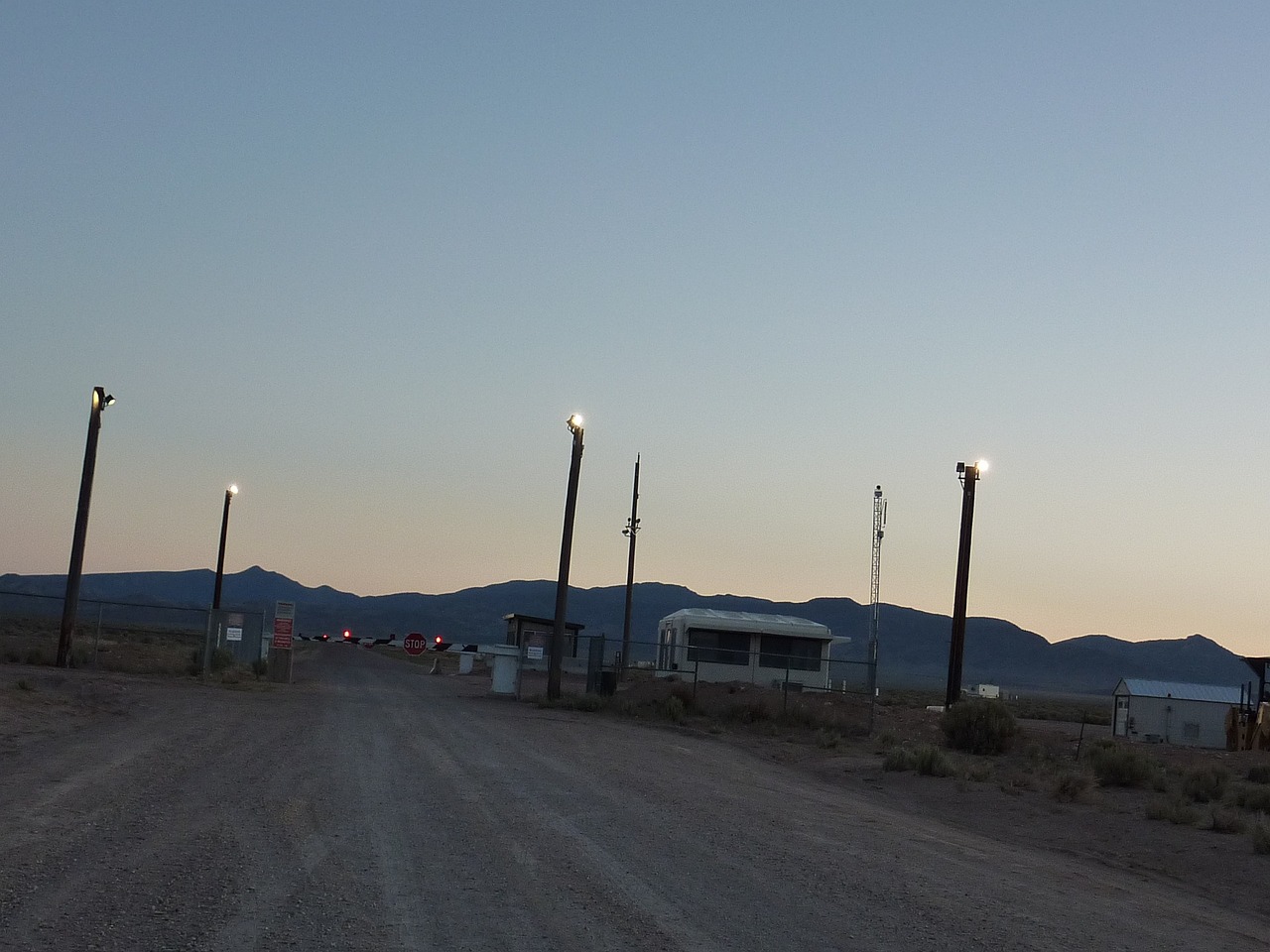
Influence on Environmental Policy
Rachel Carson's influence on environmental policy is nothing short of revolutionary. Her groundbreaking work, particularly in Silent Spring, not only raised awareness about the dangers of pesticides but also sparked a broader conversation about human impacts on the environment. Before Carson's writings, the idea of environmental regulation was often sidelined, overshadowed by industrial growth and economic interests. However, her compelling narrative and scientific rigor changed the landscape of environmental discourse.
Carson's advocacy led to significant changes in public perception regarding the use of chemicals in agriculture and pest control. She effectively communicated the idea that the health of our ecosystems is intricately linked to human health. This realization was pivotal in shifting the focus from profit-driven practices to sustainable approaches that prioritize ecological integrity.
As a direct result of Carson's influence, several key policies and regulatory bodies were established. For instance, her work laid the groundwork for the formation of the United States Environmental Protection Agency (EPA) in 1970. This agency was created to consolidate federal research, monitoring, standard-setting, and enforcement activities related to environmental protection. The establishment of the EPA marked a significant turning point in how the government approached environmental issues.
Moreover, Carson's writings contributed to the passing of critical legislation such as the Clean Air Act and the Clean Water Act. These laws were designed to control pollution and protect natural resources, demonstrating a clear shift in policy towards prioritizing environmental health. The ripple effect of her work can still be seen today, as contemporary policies increasingly reflect her principles of sustainability and conservation.
Carson's influence extended beyond the United States, inspiring global movements for environmental protection. Her work resonated with international audiences, leading to the establishment of various environmental treaties and conventions aimed at addressing ecological issues on a global scale. For example, the Stockholm Conference on the Human Environment in 1972 was heavily influenced by the ideas Carson championed, emphasizing the need for collaborative efforts to protect our planet.
In summary, Rachel Carson's contributions to environmental policy were profound and far-reaching. She not only challenged the status quo but also provided a framework for understanding the intricate connections between human activities and the natural world. Her legacy continues to inspire policymakers and activists alike, ensuring that the conversation about environmental protection remains at the forefront of public discourse.
- What was Rachel Carson's most famous book?
Carson's most famous book is Silent Spring, published in 1962, which highlighted the dangers of pesticides and their impact on the environment.
- How did Rachel Carson influence environmental policy?
Her work led to the creation of the EPA and the passing of key environmental legislation aimed at protecting ecosystems and public health.
- What is the legacy of Rachel Carson?
Carson's legacy lives on through her influence on environmental activism, policy, and education, inspiring generations to advocate for ecological integrity.
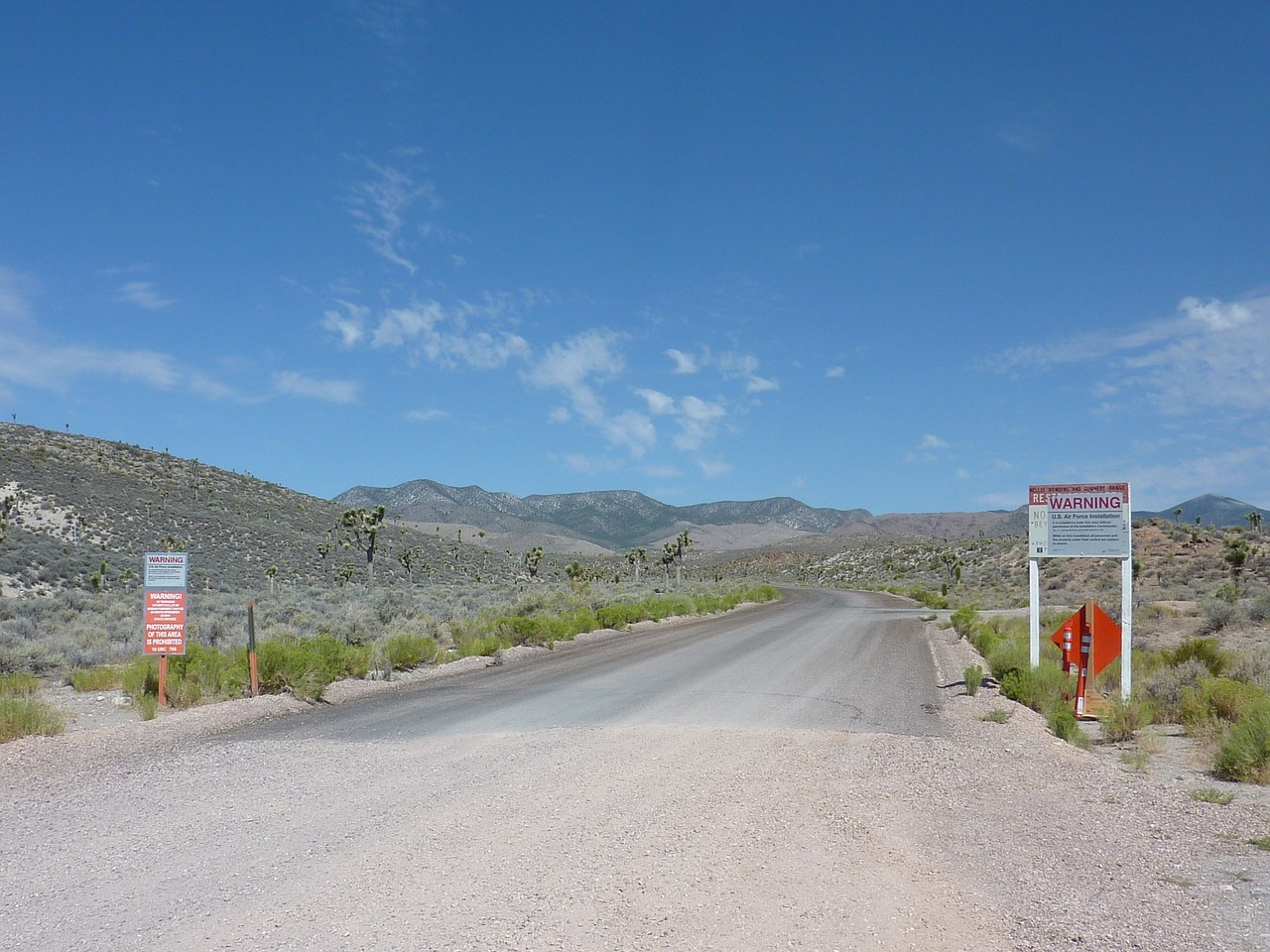
Advocacy for Conservation
Rachel Carson was not just a writer; she was a fervent advocate for conservation. Her passion for the environment was palpable, and it propelled her to become a leading voice in the fight for ecological preservation. Carson understood that the health of our planet was intricately linked to the well-being of all living organisms. She often emphasized that every action we take has a ripple effect on the ecosystem. This interconnectedness is a fundamental principle of conservation, and Carson's work has been instrumental in highlighting it.
Throughout her life, Carson engaged with numerous environmental organizations, lending her expertise and voice to their missions. She believed in the power of collaboration and often remarked that “the conservation movement is not a solitary endeavor; it requires the collective effort of many.” Her ability to distill complex scientific ideas into relatable narratives made her a valuable ally in various campaigns for ecological awareness. For instance, her collaboration with the National Audubon Society and the Nature Conservancy helped elevate critical conservation issues to the forefront of public discourse.
Carson's advocacy was not limited to her writings. She actively participated in discussions and debates, urging policymakers and the public to recognize the urgent need for conservation. She often pointed out that the destruction of natural habitats not only threatens wildlife but also jeopardizes human health and safety. In her view, preserving nature was not merely an act of altruism; it was essential for our survival. This perspective was revolutionary at the time and continues to resonate today.
To illustrate her impact, consider the following table that showcases some of the key conservation initiatives that were influenced by Carson's work:
| Year | Initiative | Description |
|---|---|---|
| 1962 | Silent Spring Publication | Raised awareness about the dangers of pesticides and their impact on ecosystems. |
| 1970 | Establishment of the EPA | Carson's work contributed to the creation of the Environmental Protection Agency in the U.S. |
| 1972 | Ban on DDT | Her advocacy played a significant role in the eventual ban of the pesticide DDT in the U.S. |
Carson’s influence on conservation extends well beyond her lifetime. Today, her legacy is evident in the ongoing efforts to protect endangered species, restore habitats, and promote sustainable practices. Environmental organizations around the world continue to draw inspiration from her work, reminding us that the fight for conservation is far from over. Carson's belief that “we cannot have a healthy environment without a healthy society” remains a guiding principle for many activists and organizations.
In conclusion, Rachel Carson's advocacy for conservation was not just about protecting nature; it was about ensuring a sustainable future for all. Her work serves as a reminder that we each have a role to play in safeguarding our planet. Whether through activism, education, or simply making more environmentally conscious choices, we can all contribute to the ongoing movement that Carson so passionately championed.
- What was Rachel Carson's most famous book?
Her most famous book is Silent Spring, published in 1962, which raised awareness about the dangers of pesticides.
- How did Rachel Carson influence environmental policy?
Through her writings and advocacy, Carson played a crucial role in the establishment of the Environmental Protection Agency (EPA) and the banning of harmful pesticides like DDT.
- What is Rachel Carson's legacy today?
Carson's legacy lives on in the ongoing environmental movements and policies aimed at protecting ecosystems and promoting sustainability.
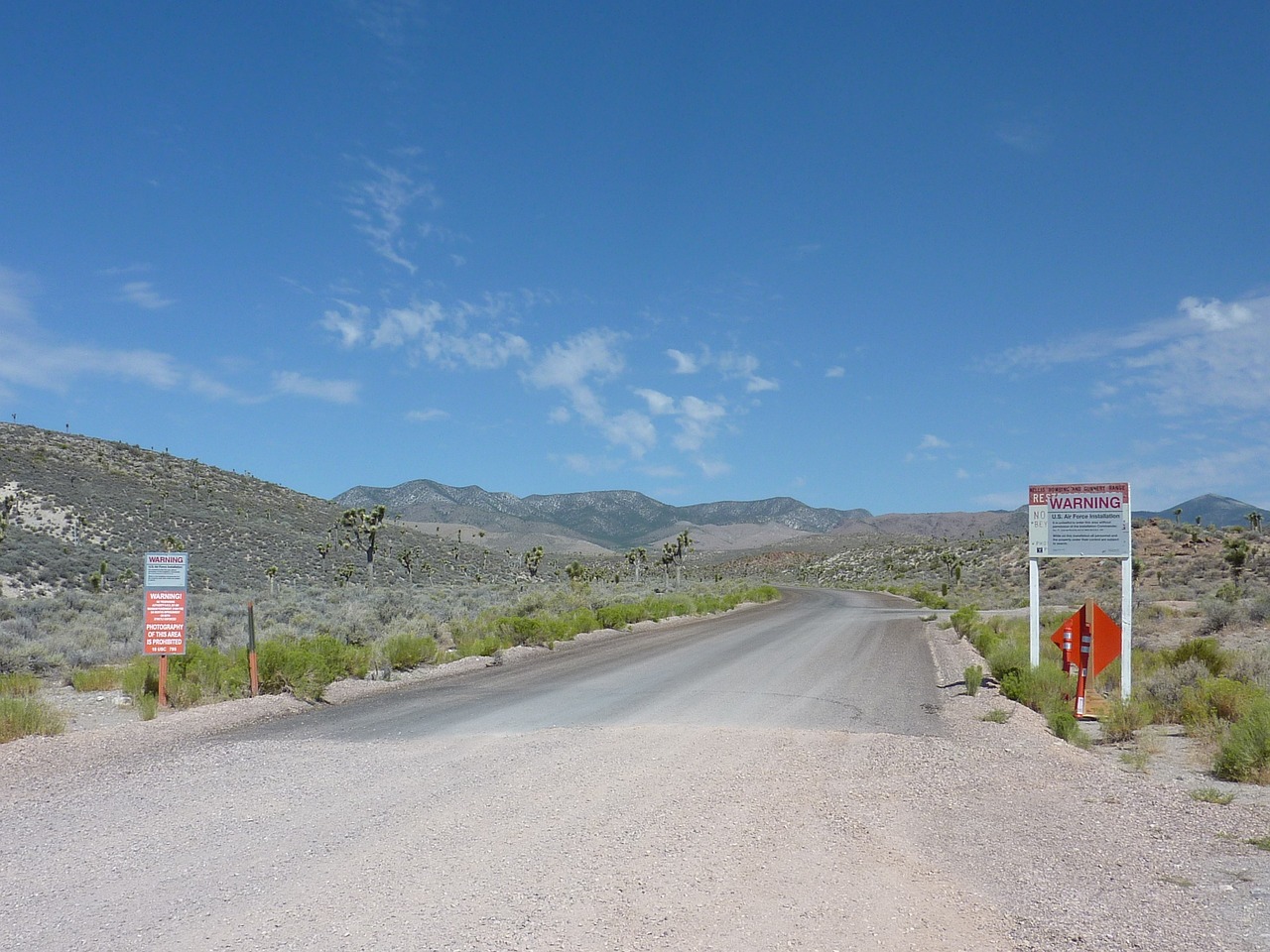
Collaboration with Environmental Groups
Rachel Carson was not just a brilliant writer and scientist; she was also a tireless advocate for environmental conservation. Her collaborations with various environmental organizations played a crucial role in amplifying her message and mobilizing public support for ecological causes. Carson understood that to effect real change, she needed to align her efforts with groups that shared her vision of a healthier planet. This strategic alliance allowed her to reach a broader audience and make a lasting impact.
One of her notable partnerships was with the National Audubon Society, an organization dedicated to the conservation of birds and their habitats. Through this collaboration, Carson was able to leverage the Society's extensive network to disseminate her findings on the detrimental effects of pesticides. The Society's members, passionate about bird conservation, found a natural ally in Carson, who eloquently articulated the interconnectedness of all living beings. Her work resonated deeply within their community, creating a ripple effect that raised awareness about the broader implications of environmental degradation.
Furthermore, Carson's relationship with the Sierra Club, one of the oldest and most influential environmental organizations in the United States, was instrumental in promoting her ideas. The Sierra Club was already involved in advocating for wilderness preservation, and Carson's scientific insights provided a compelling narrative that enriched their campaigns. Together, they worked on initiatives that highlighted the importance of protecting natural habitats from industrial pollution and overdevelopment, showing how human actions can disrupt delicate ecosystems.
Carson's ability to communicate complex scientific concepts in a relatable manner made her a valuable asset to these organizations. She often participated in public forums and discussions, where she eloquently conveyed the urgency of the environmental crisis. This skill not only helped to educate the public but also inspired many to take action. The collaboration between Carson and these environmental groups was a testament to her belief that collective action is essential in the fight for sustainability.
In addition to her partnerships with established organizations, Carson also mentored emerging environmental activists. She recognized the importance of nurturing the next generation of conservationists and often shared her insights and experiences with them. This mentorship fostered a culture of activism that encouraged young people to engage with environmental issues, ensuring that her legacy would continue to inspire future leaders in the movement.
Ultimately, Rachel Carson's collaborations with environmental groups were pivotal in shaping the modern environmental movement. By uniting her scientific expertise with the grassroots efforts of these organizations, she helped to create a powerful force for change. Her work not only raised awareness about the dangers of pesticides and pollution but also laid the groundwork for a more sustainable future.
- What was Rachel Carson's most famous book?
Rachel Carson's most famous book is Silent Spring, which highlighted the dangers of pesticides and their impact on the environment. - How did Rachel Carson influence environmental policy?
Her advocacy and writings led to significant changes in environmental legislation, including the establishment of regulatory bodies aimed at protecting ecosystems. - What organizations did Rachel Carson collaborate with?
Carson collaborated with numerous environmental groups, including the National Audubon Society and the Sierra Club, to promote conservation efforts. - Why is Rachel Carson considered a pioneer in environmental science?
She is considered a pioneer because her work raised public awareness about ecological issues and inspired a global movement for conservation and sustainability.
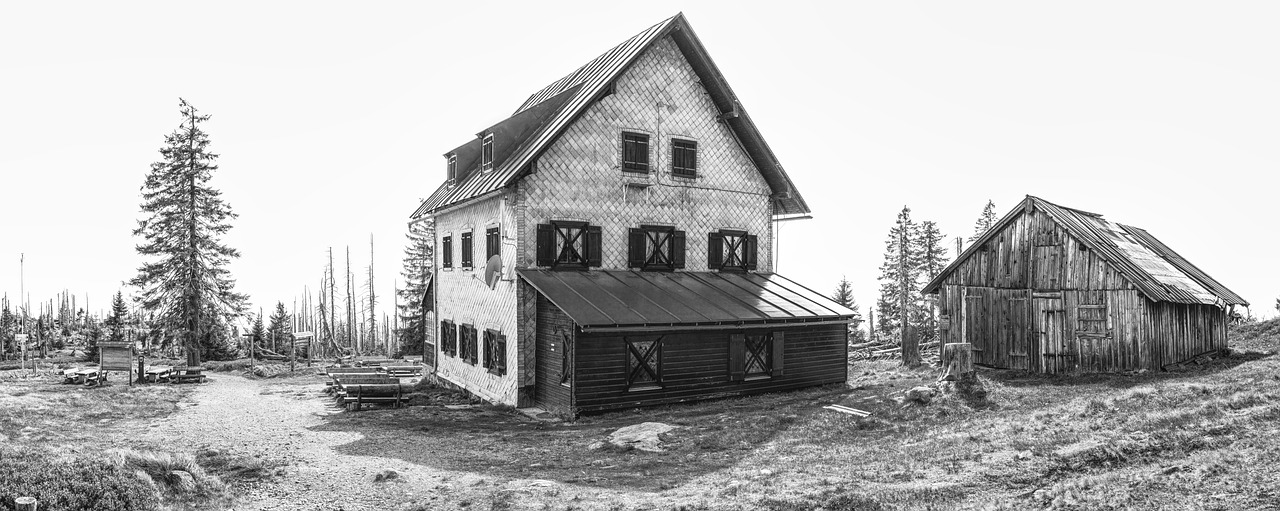
Impact on Future Generations
Rachel Carson's profound influence on environmentalism has created ripples that extend far beyond her lifetime. Her commitment to ecological awareness has not only shaped the landscape of environmental science but has also ignited a passion for conservation in countless individuals. Imagine a world where every child learns the importance of protecting nature, where the whispers of the forests and the songs of the oceans echo in their hearts. This is the legacy Carson left behind—a legacy that inspires activism and responsibility towards our planet.
Through her writings, particularly Silent Spring, Carson instilled a sense of urgency about the environmental challenges we face. She painted a vivid picture of a world where the balance of nature is disrupted, urging readers to become stewards of the Earth. This call to action resonates with many today, as environmental issues like climate change and biodiversity loss become increasingly pressing. Carson's message is simple yet powerful: we are all interconnected, and our actions have consequences.
The impact of Carson's work can be seen in the rise of environmental movements across the globe. Organizations dedicated to conservation and sustainability have adopted her principles, advocating for policies that protect ecosystems and promote biodiversity. For instance, initiatives aimed at reducing plastic waste and promoting renewable energy sources are direct responses to the awareness Carson helped cultivate. It's as if she handed us a torch, lighting the way for future generations to follow in her footsteps.
Moreover, Carson's legacy lives on through education. Schools and universities now incorporate environmental science into their curricula, teaching students about the delicate balance of ecosystems and the importance of conservation. Programs that engage young people in outdoor activities foster a deep appreciation for nature, encouraging them to become active participants in preserving it. The seeds of awareness she planted are blossoming into a new generation of environmental advocates.
To further illustrate the ongoing impact of Rachel Carson's work, consider the following table that highlights key areas influenced by her advocacy:
| Area of Impact | Description |
|---|---|
| Environmental Legislation | Carson's work led to the establishment of the Environmental Protection Agency (EPA) and significant laws like the Clean Air Act. |
| Public Awareness | Her writings sparked widespread public interest in environmental issues, leading to grassroots movements and activism. |
| Education | Carson's influence is evident in environmental education programs that emphasize stewardship and sustainability. |
| Conservation Efforts | Many organizations now focus on habitat preservation and species protection, inspired by Carson's holistic view of nature. |
In conclusion, Rachel Carson's impact on future generations is immeasurable. She has inspired a culture of activism that persists in addressing contemporary environmental challenges. As we face the daunting task of protecting our planet, we can look to her legacy for guidance and motivation. The fight for a sustainable future continues, and it is fueled by the passion and dedication of those who have been touched by her words. Are you ready to join the movement and carry forward the torch that Carson lit?
- What was Rachel Carson's most famous book?
Rachel Carson's most famous book is Silent Spring, published in 1962, which raised awareness about the dangers of pesticides.
- How did Rachel Carson influence environmental policy?
Her advocacy and writings led to significant changes in environmental legislation, including the establishment of the EPA.
- Why is Rachel Carson considered a pioneer of the environmental movement?
Carson's ability to blend scientific research with compelling narratives inspired a global movement for conservation and sustainability.
Frequently Asked Questions
- What inspired Rachel Carson to write Silent Spring?
Rachel Carson was deeply moved by her love for nature and her scientific background. She noticed the alarming effects of pesticides on the environment and wildlife, which ignited her passion to raise awareness. Silent Spring was her way of sounding the alarm, urging society to reconsider its relationship with nature.
- How did Silent Spring impact environmental policy?
Silent Spring played a crucial role in shaping environmental policy by highlighting the dangers of pesticides. It led to increased public awareness and ultimately prompted the establishment of regulatory bodies, like the Environmental Protection Agency (EPA), aimed at protecting ecosystems and public health.
- What was the public reaction to Silent Spring?
The release of Silent Spring sparked intense debate and controversy. While many praised Carson for her courage and insights, she also faced significant backlash from chemical companies and some scientists who disputed her findings. Nevertheless, her steadfast commitment to truth helped to fuel the environmental discourse.
- What is Rachel Carson's legacy today?
Rachel Carson's legacy is monumental in the realm of environmentalism. Her work continues to inspire activists and scientists alike, influencing contemporary discussions about sustainability and ecological integrity. Silent Spring remains a foundational text for anyone interested in environmental protection.
- How did Rachel Carson collaborate with environmental groups?
Carson worked closely with various environmental organizations, helping to shape their missions and strategies. Her ability to communicate complex scientific concepts in an accessible way made her an invaluable asset in advocacy efforts, fostering a collaborative spirit in the fight for conservation.
- Why is Rachel Carson considered a pioneer of the modern environmental movement?
Rachel Carson is considered a pioneer because her work brought ecological issues to the forefront of public consciousness. By blending scientific research with compelling storytelling, she created a narrative that resonated with the masses, igniting a global movement for conservation and sustainability.
- What challenges did Rachel Carson face during her career?
Throughout her career, Rachel Carson faced numerous challenges, including fierce criticism from industry leaders and scientists who disagreed with her findings. Additionally, she battled health issues while writing Silent Spring, yet her determination and passion for the environment never wavered.
- How can I continue Rachel Carson's legacy today?
You can continue Rachel Carson's legacy by advocating for environmental protection, educating yourself and others about ecological issues, and supporting sustainable practices in your community. Every small action contributes to the larger goal of preserving our planet for future generations.









